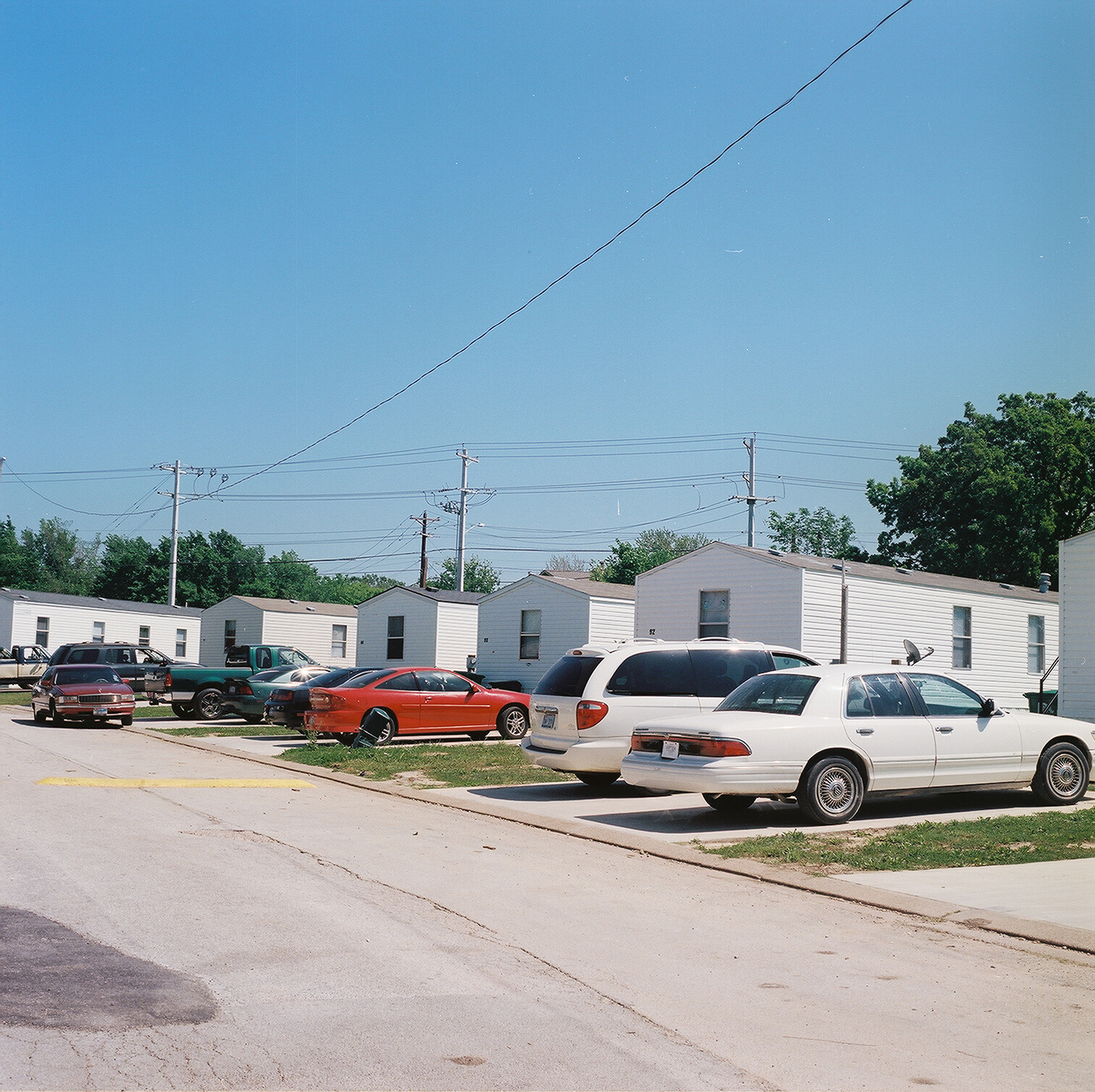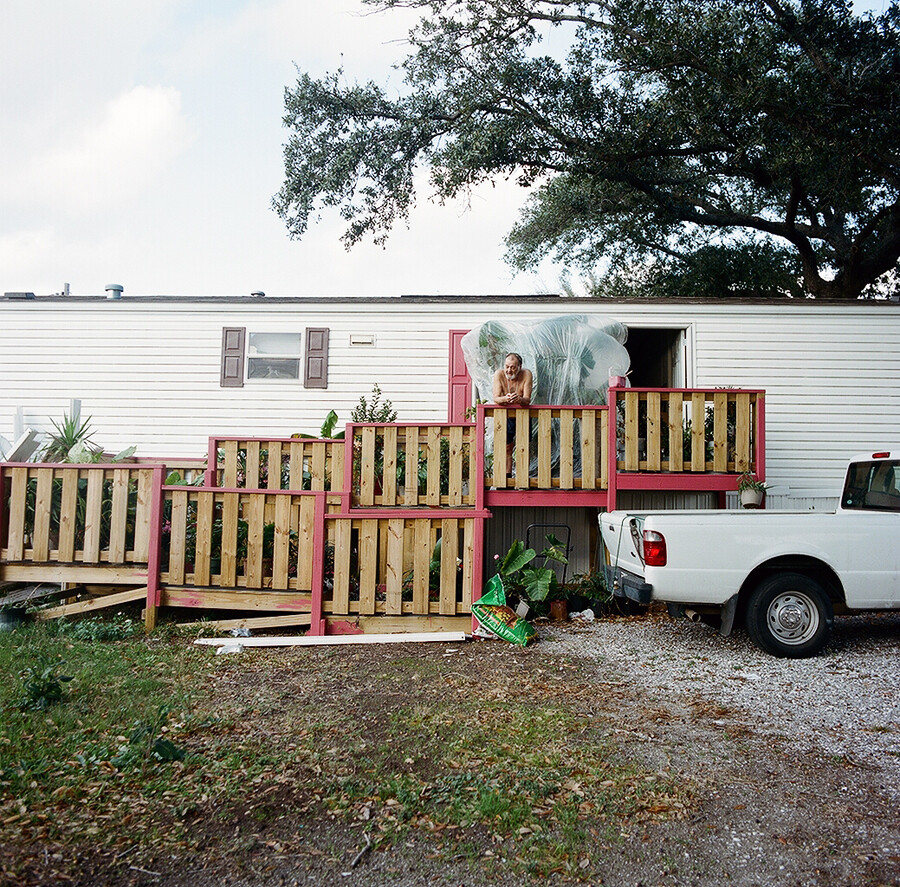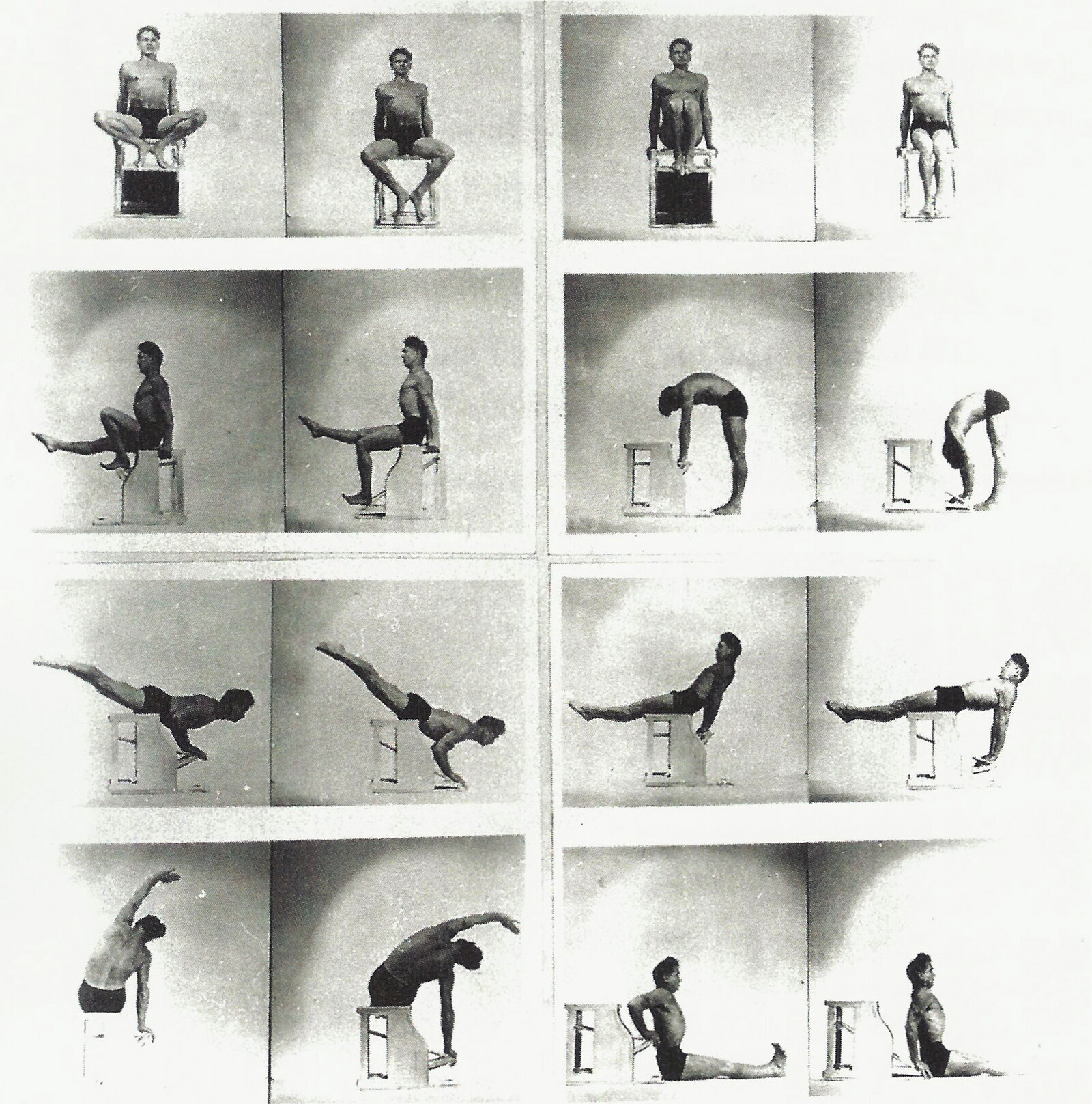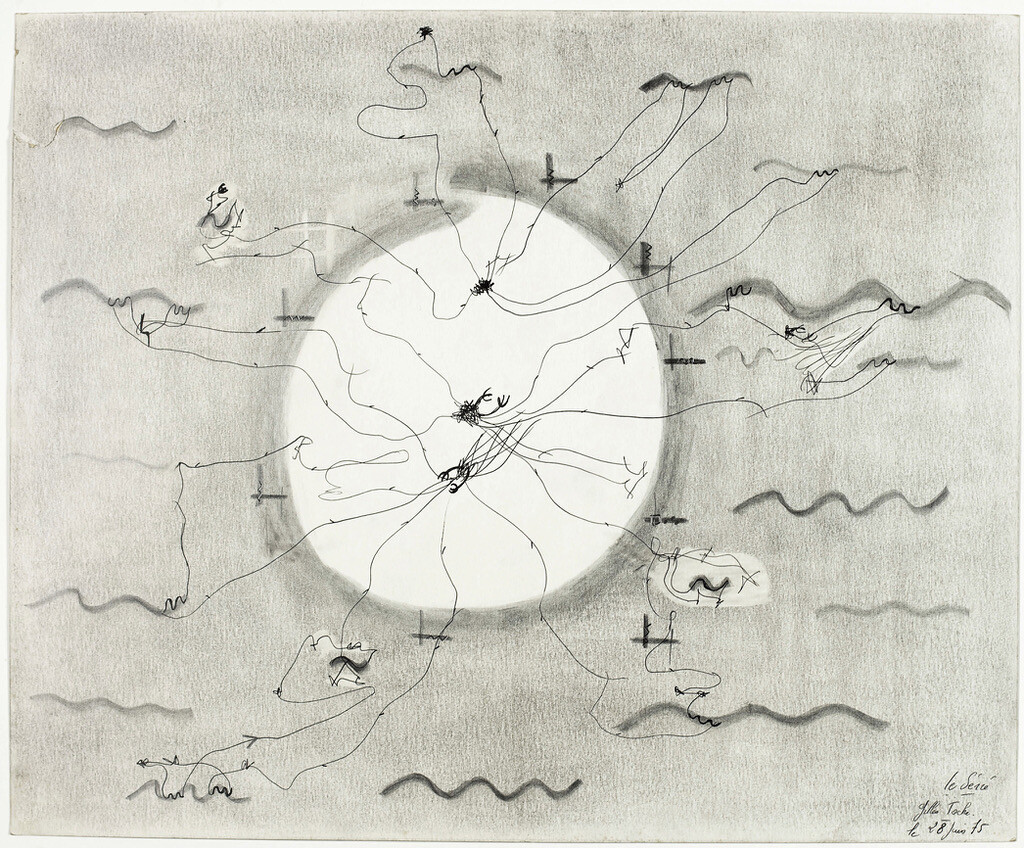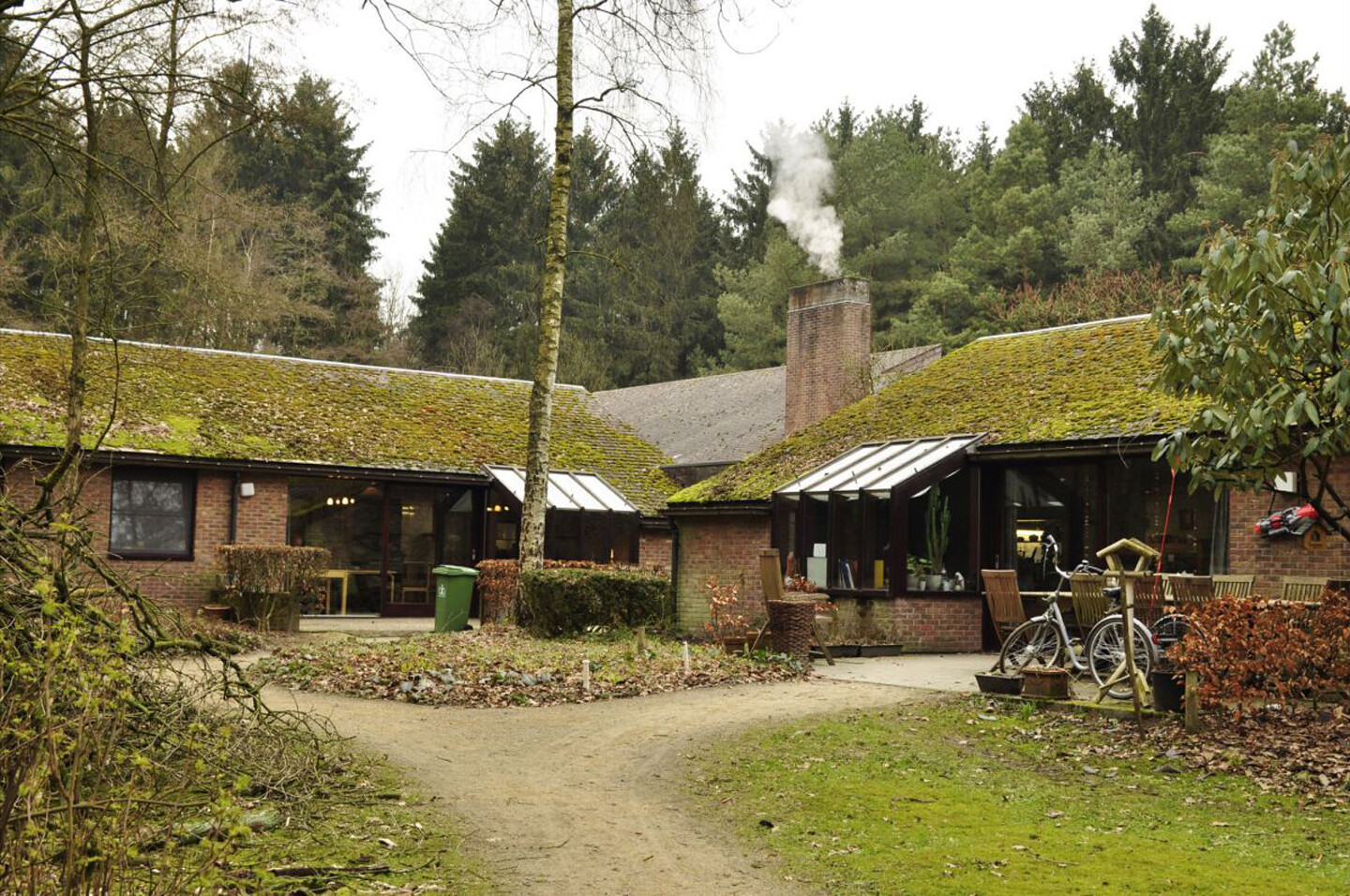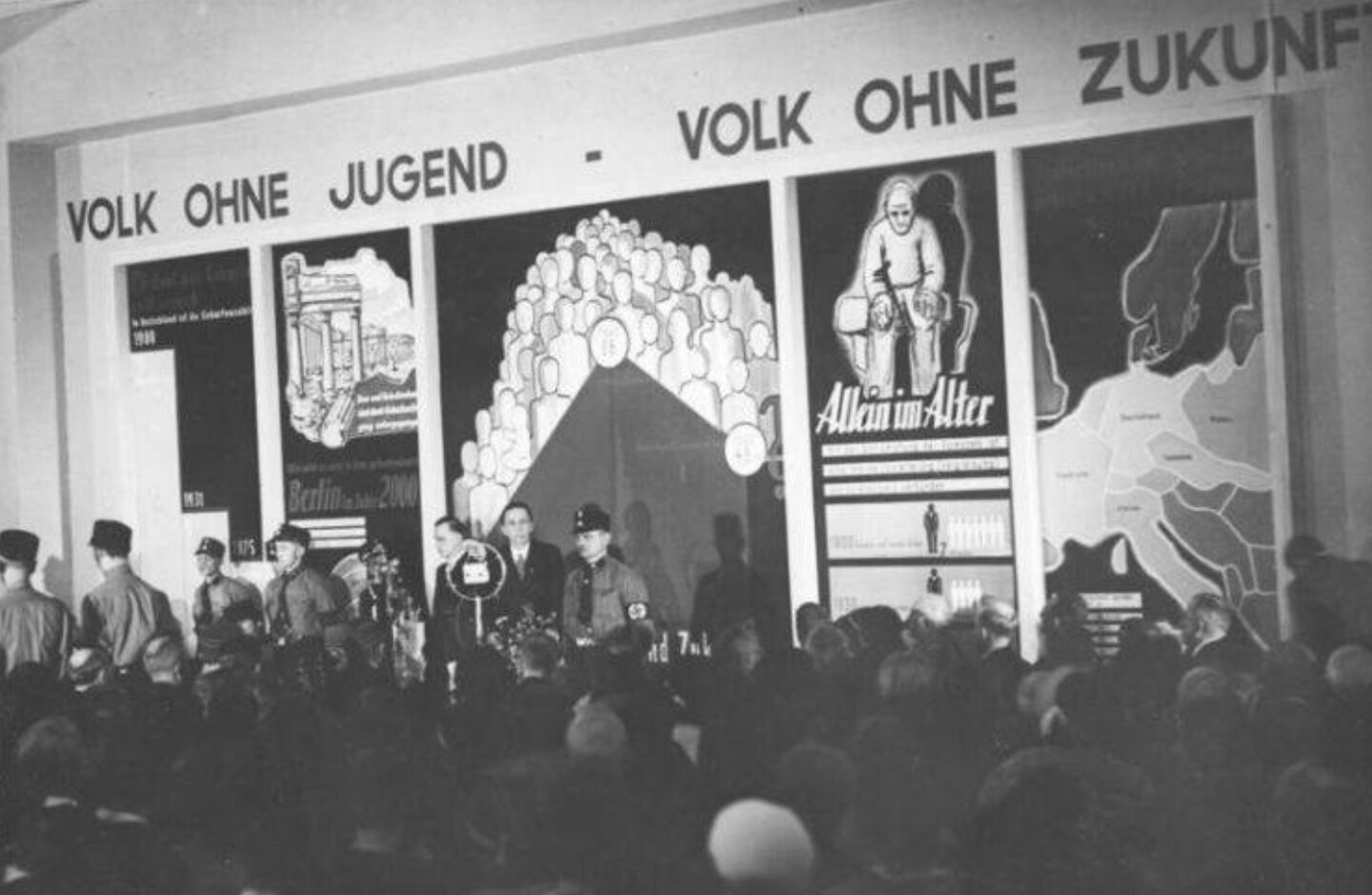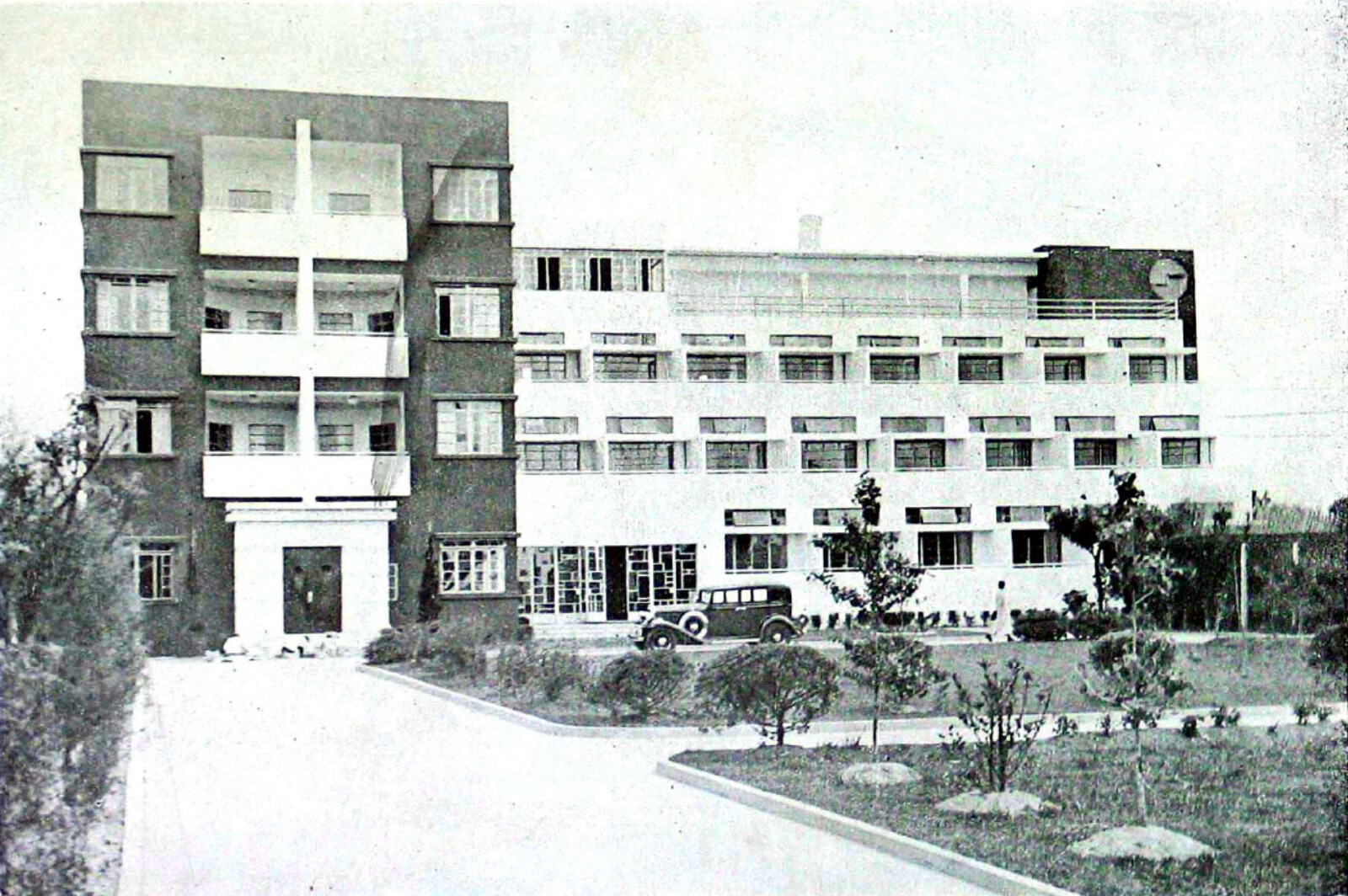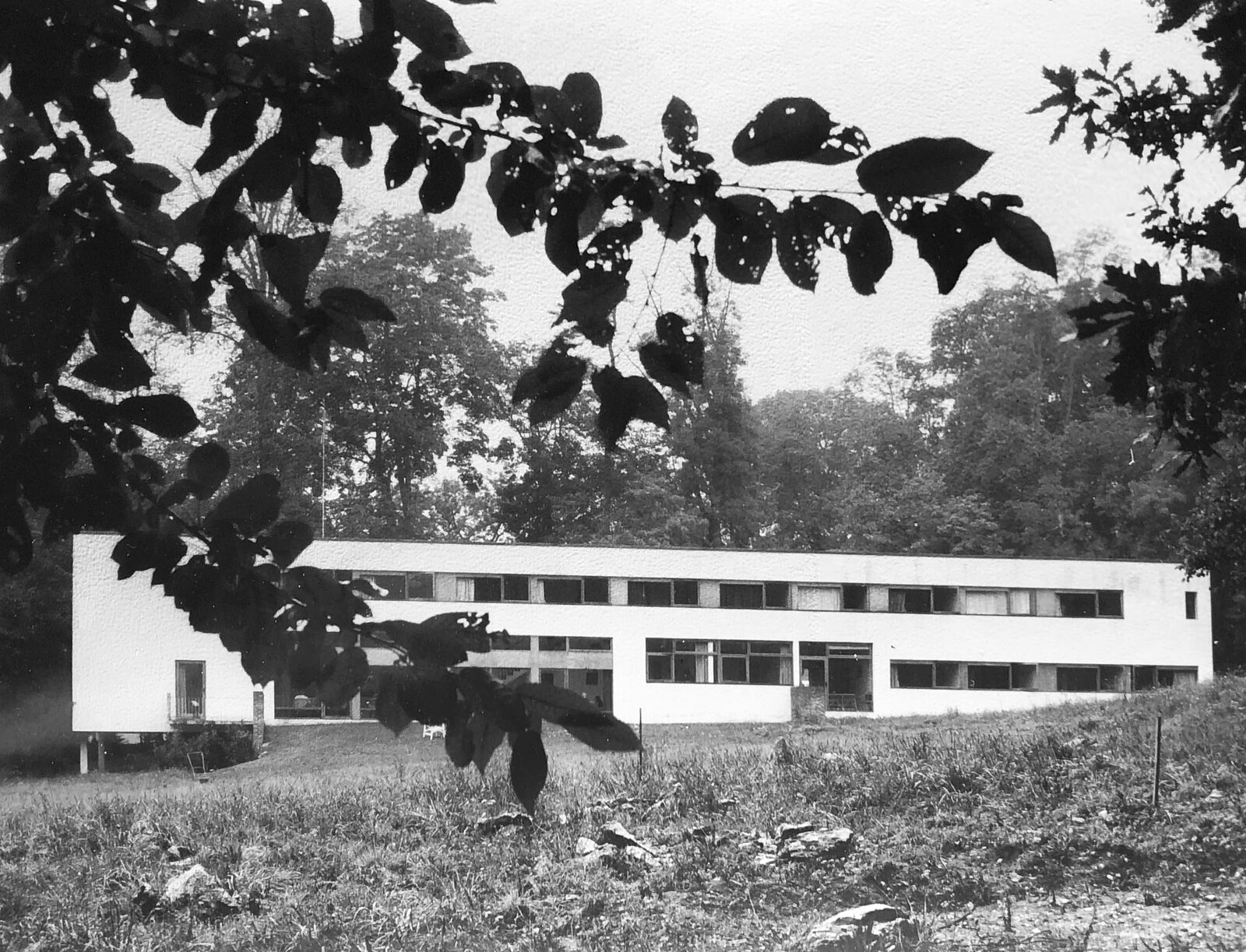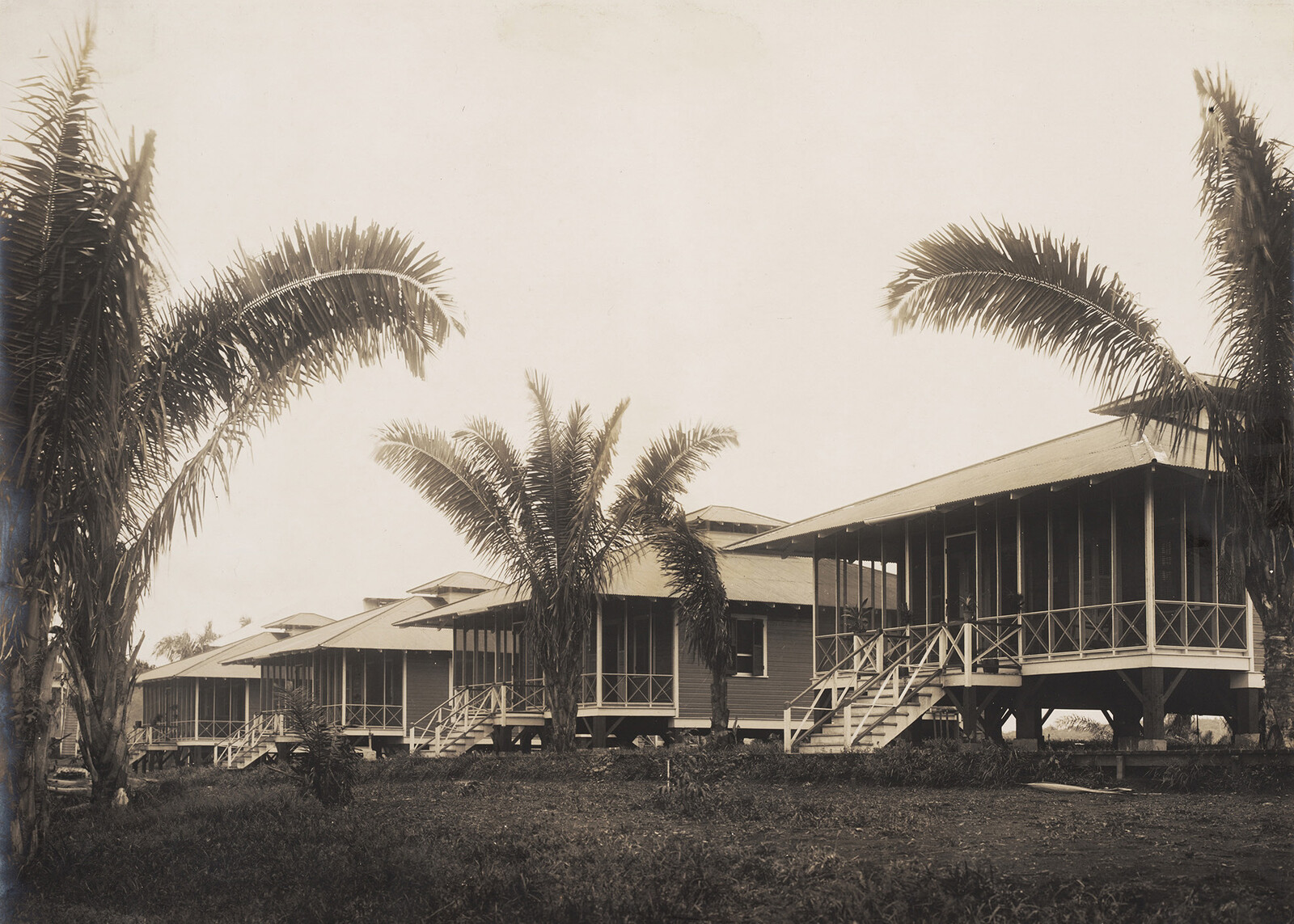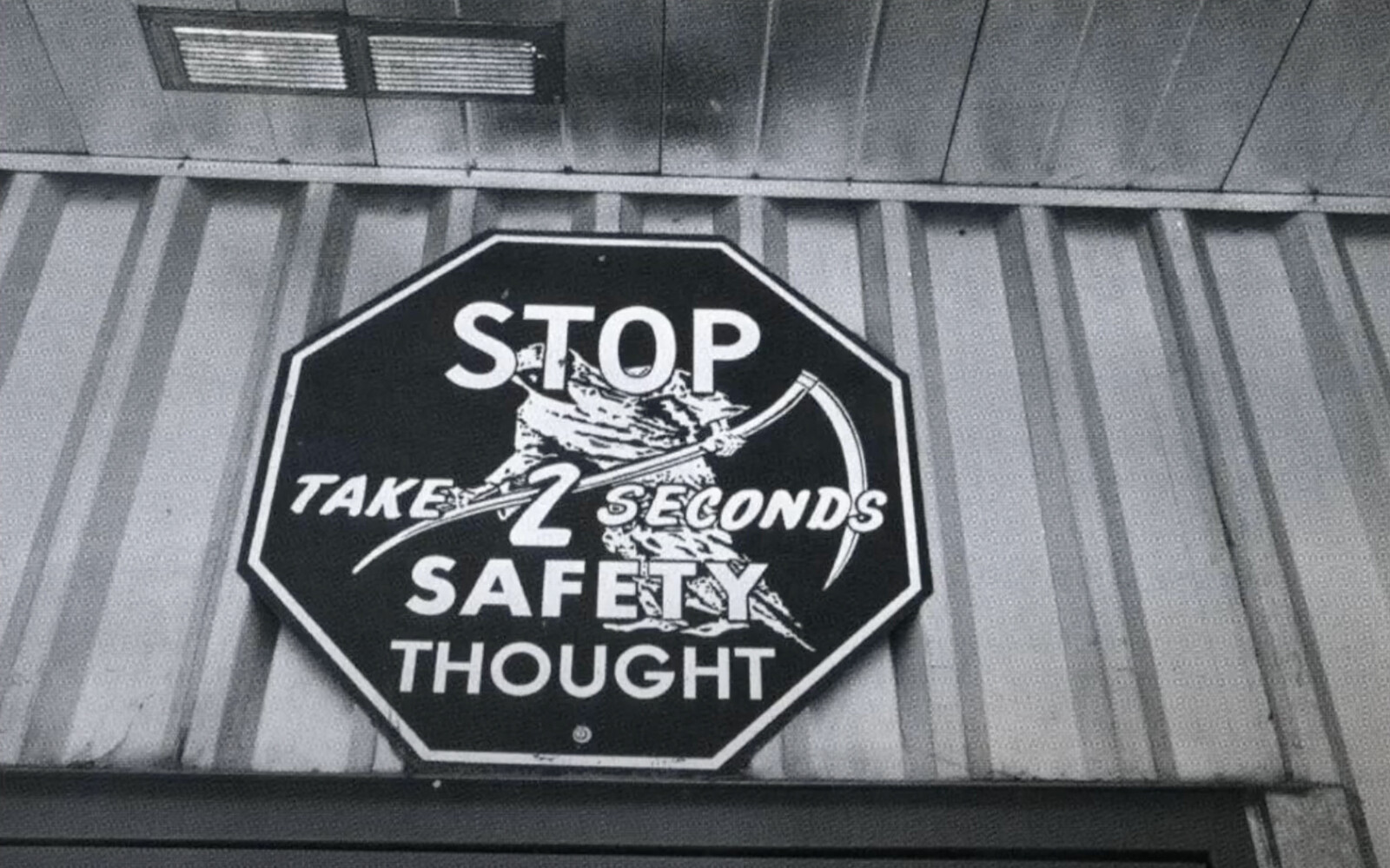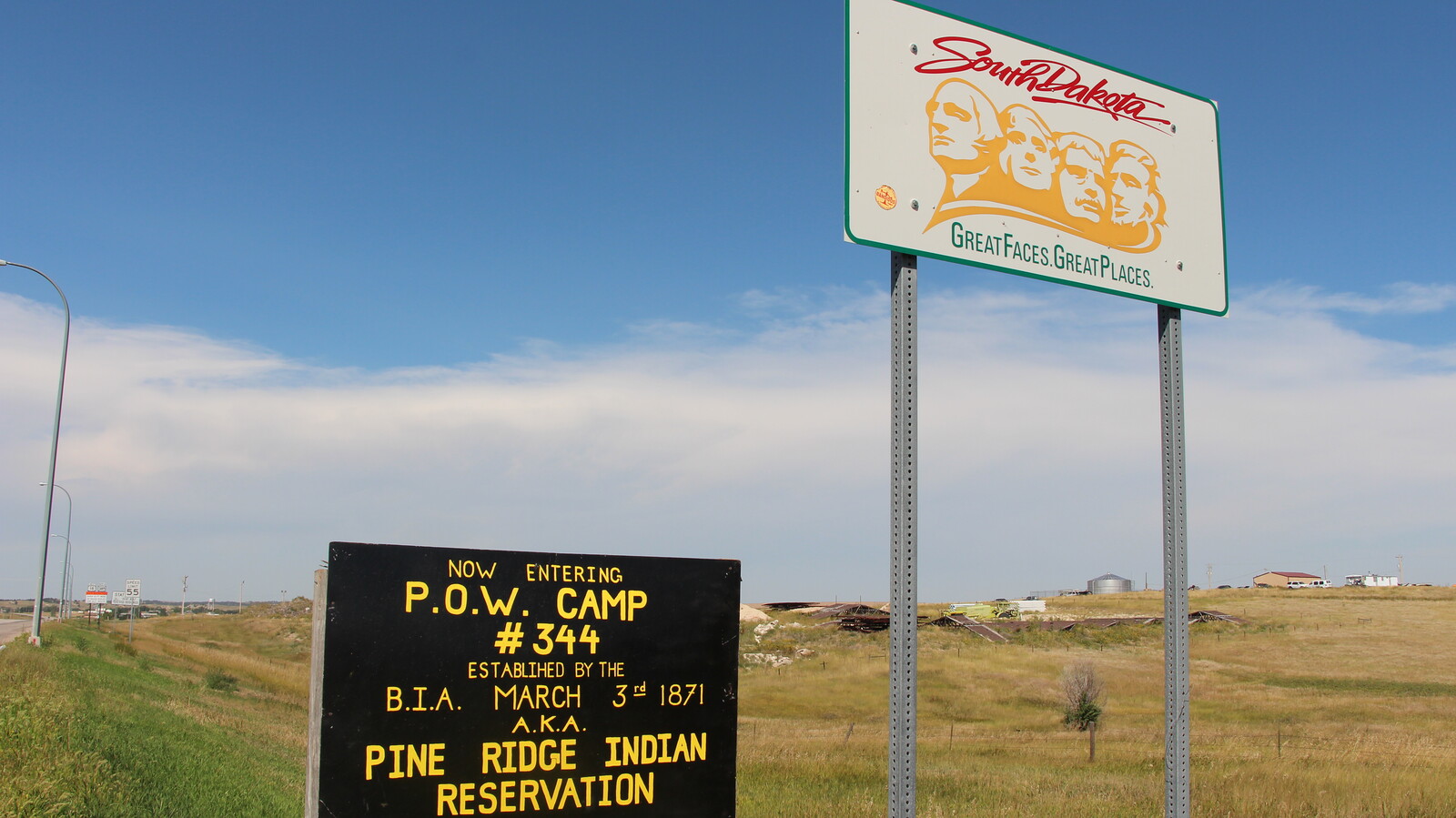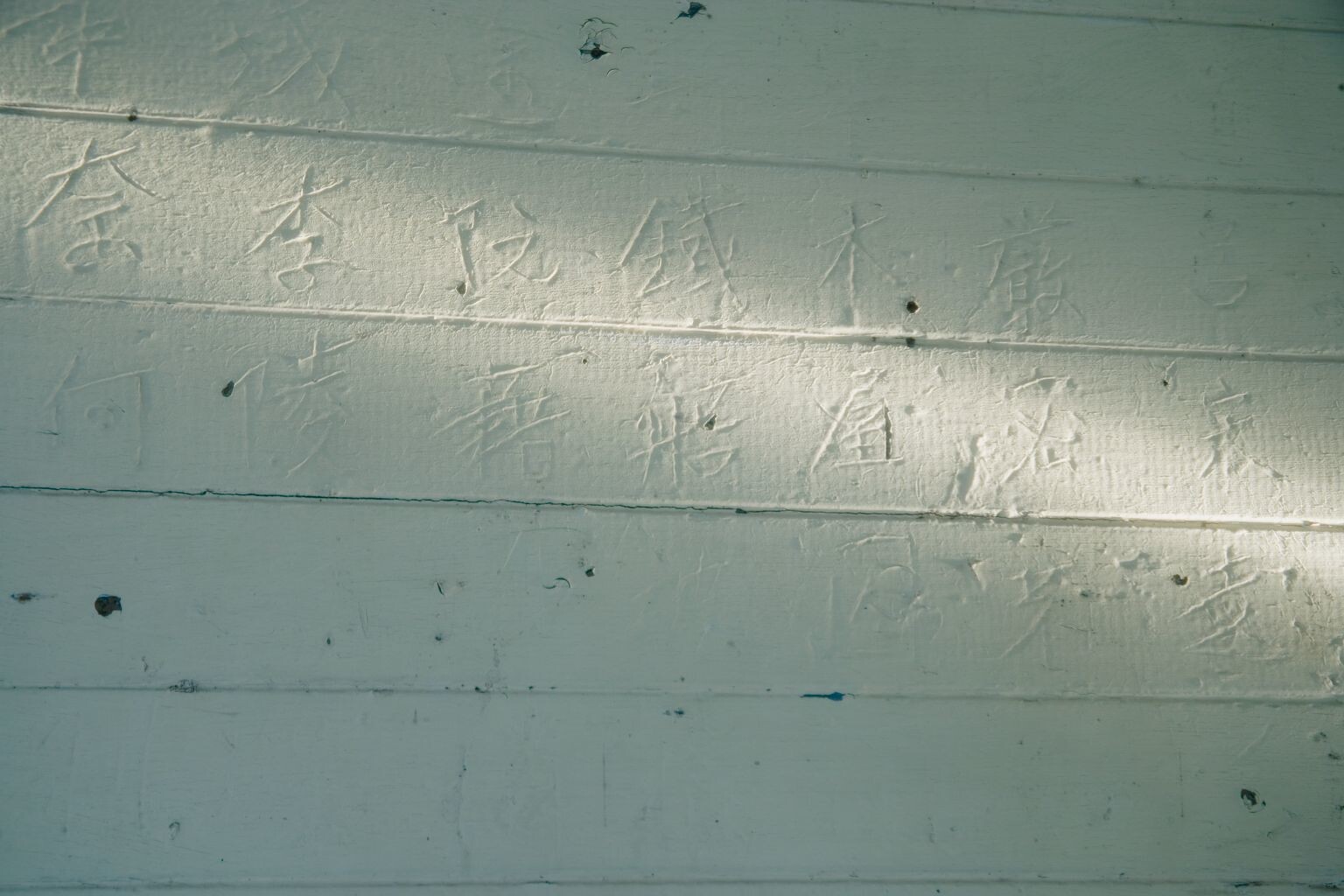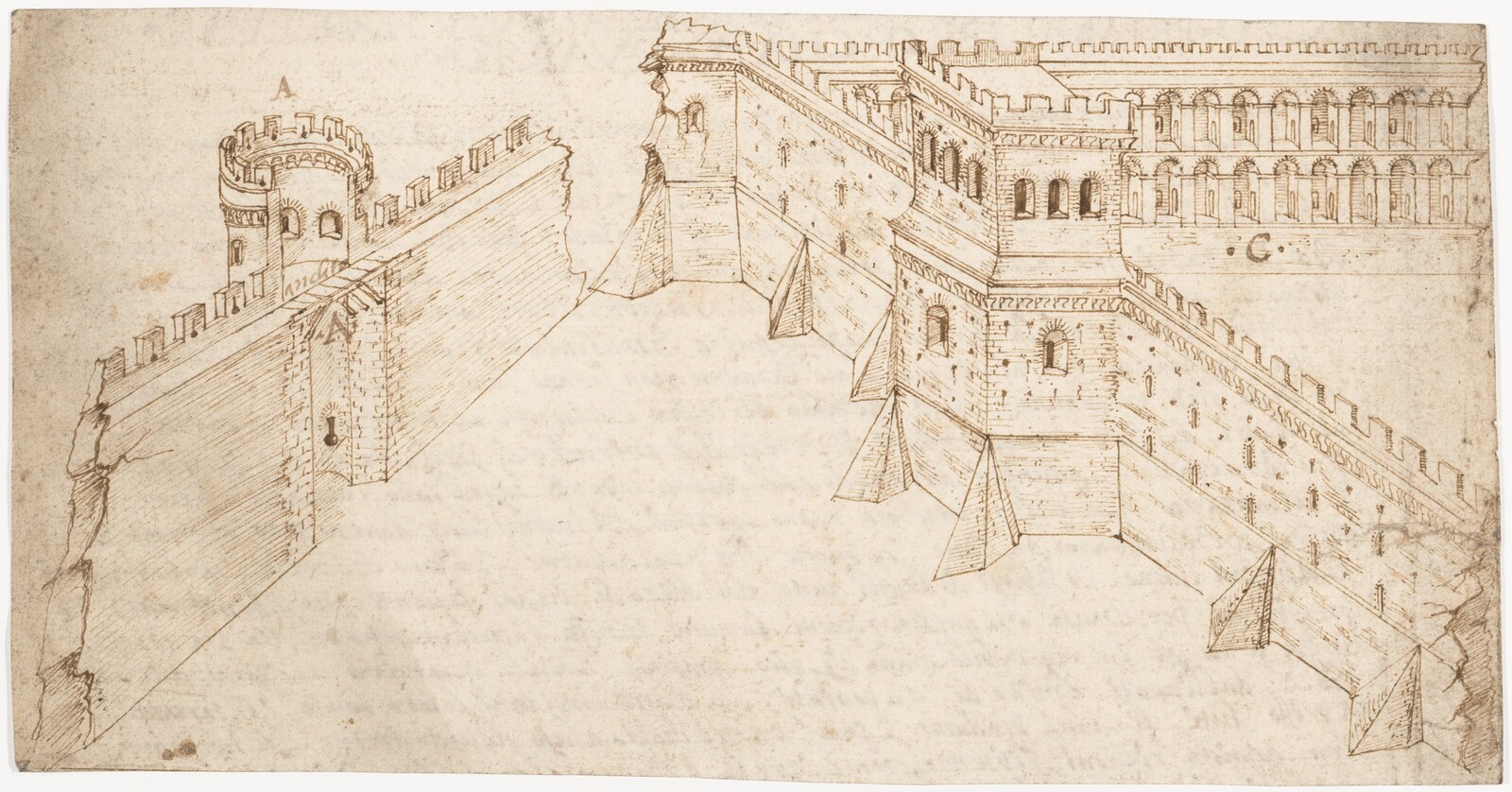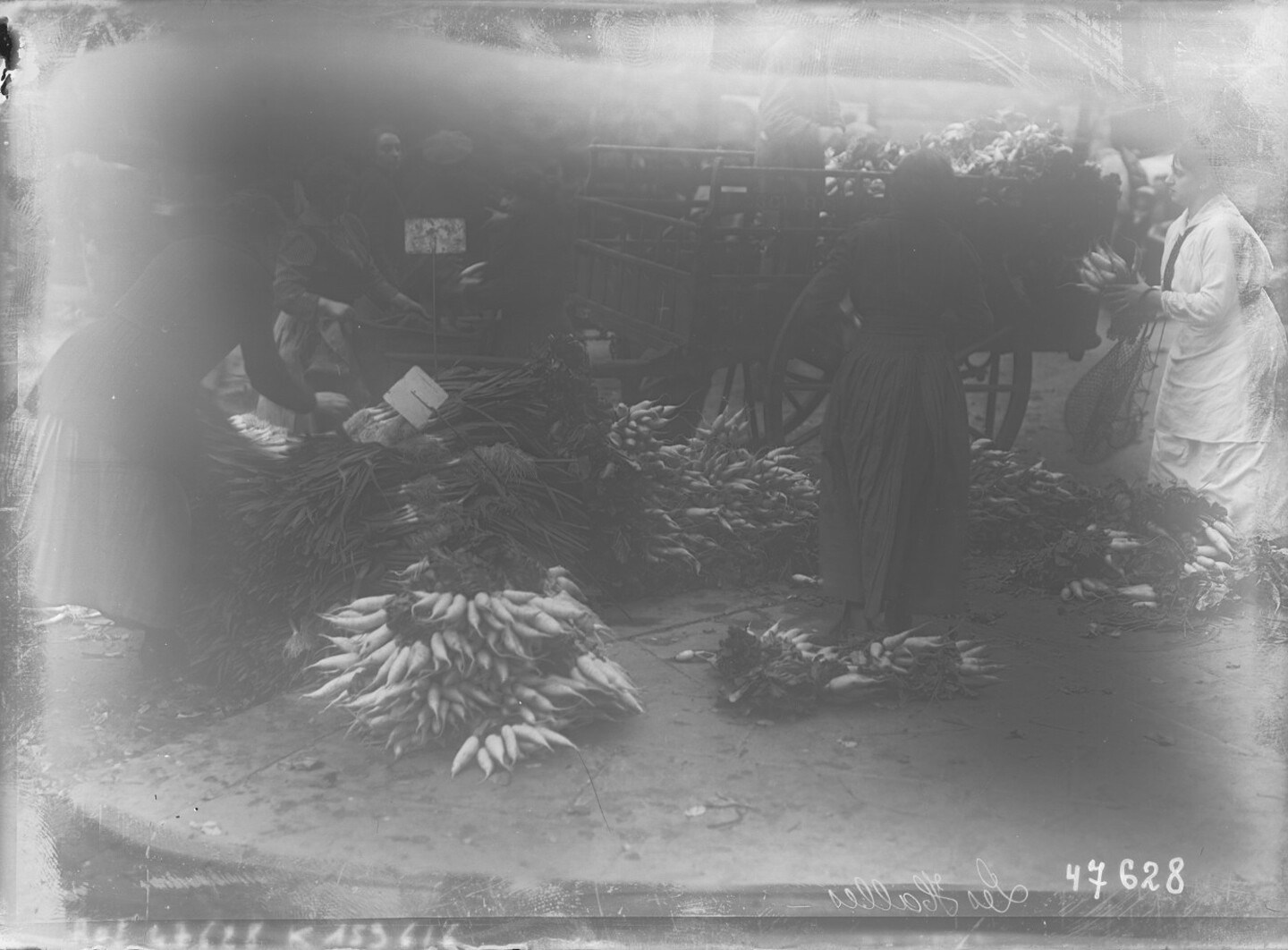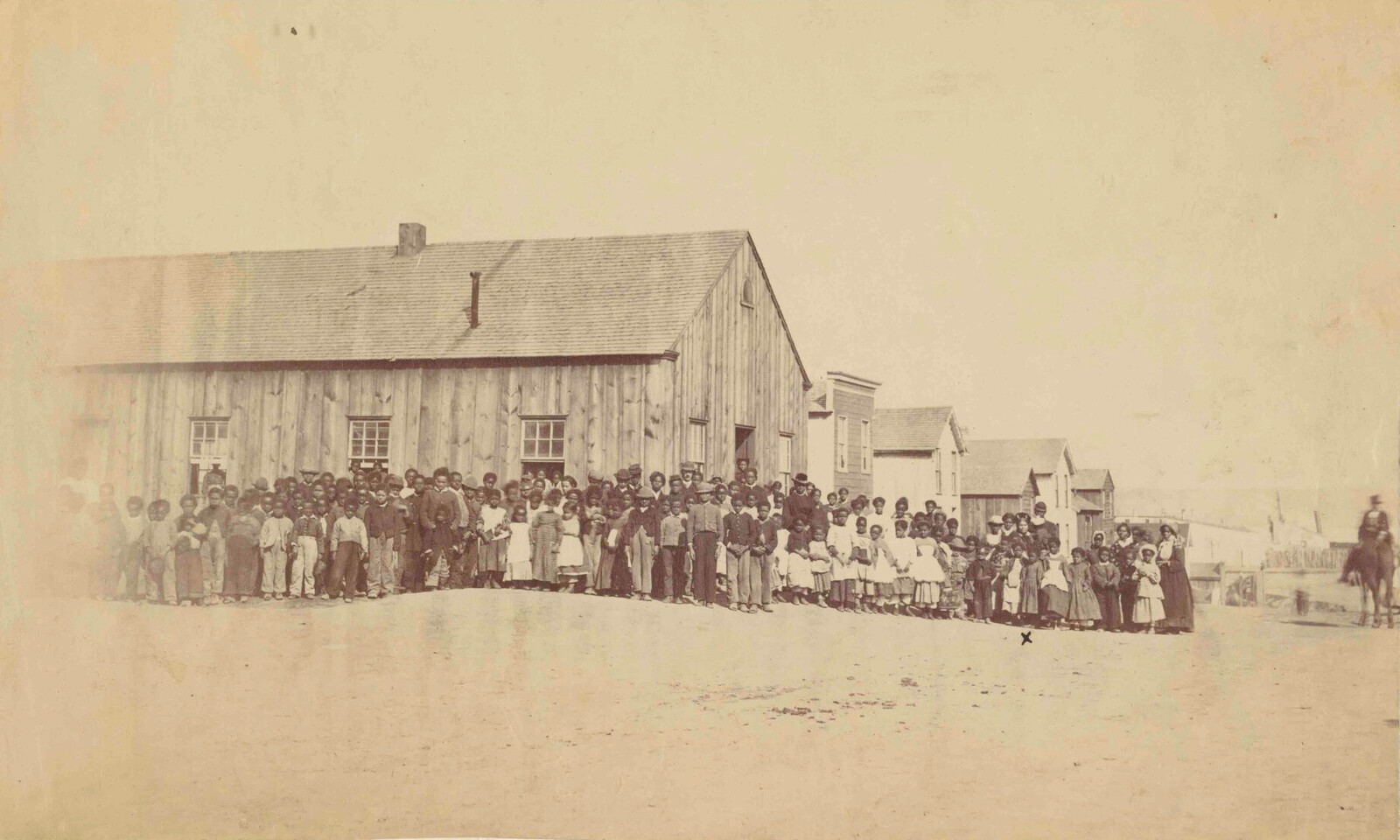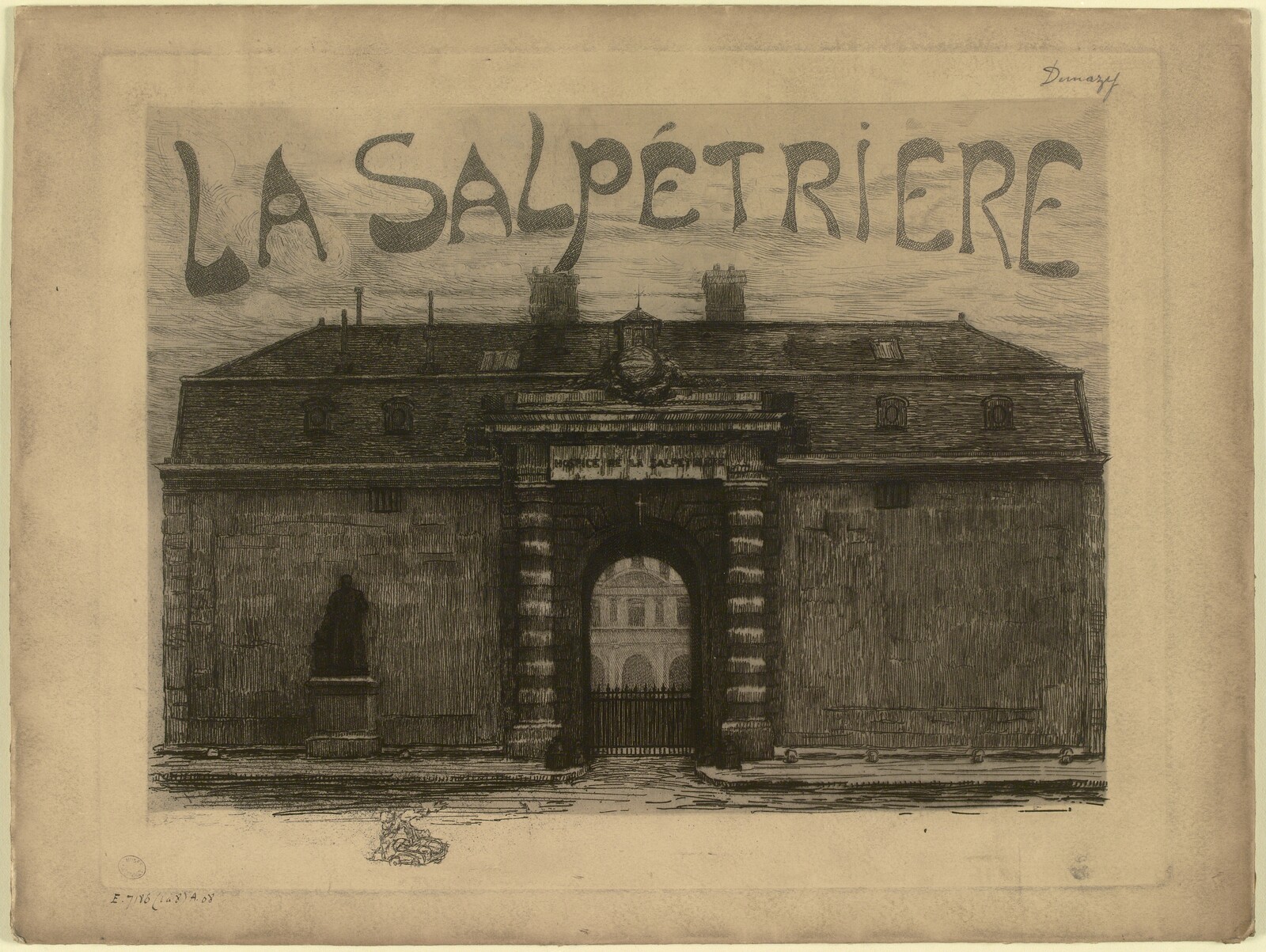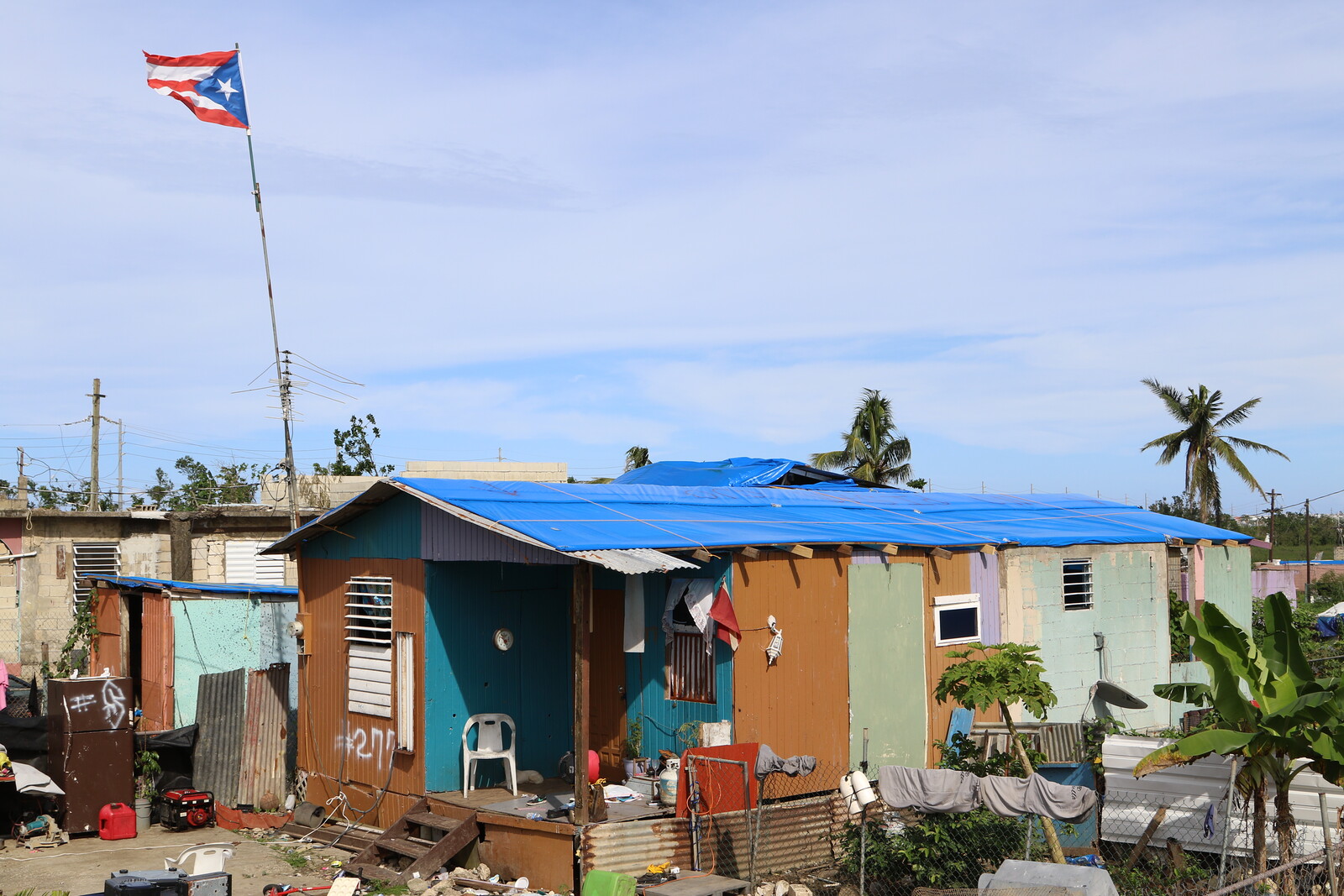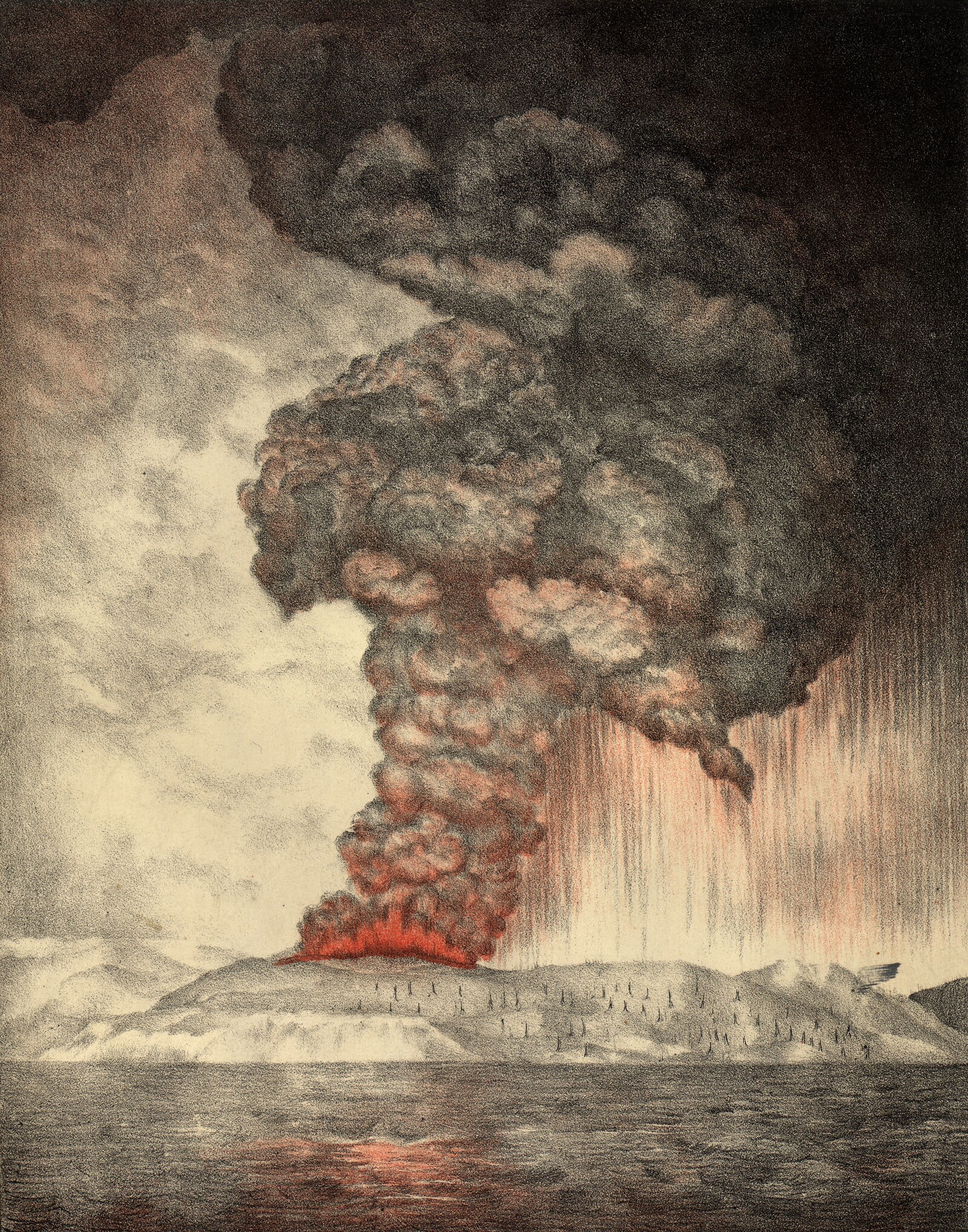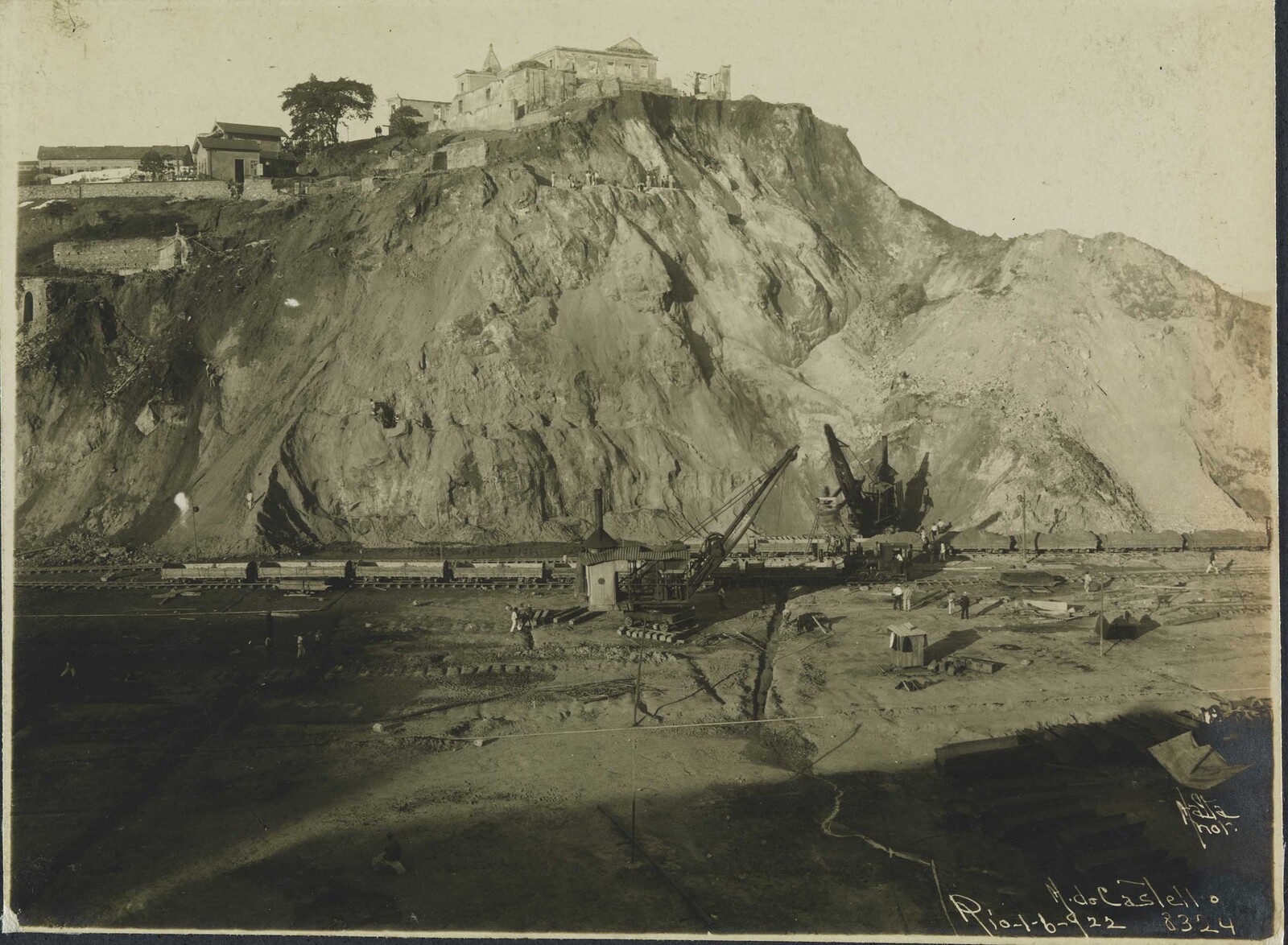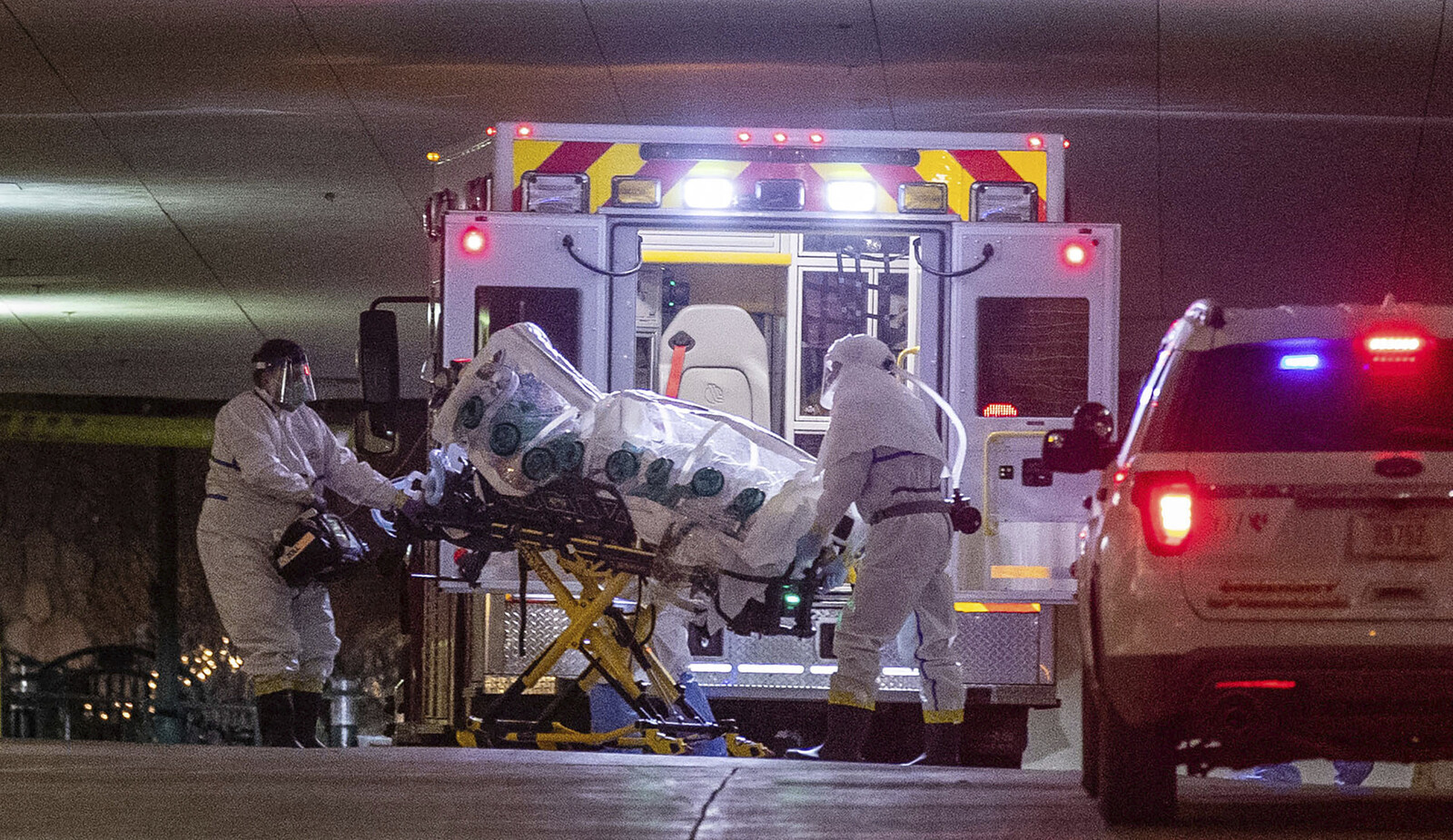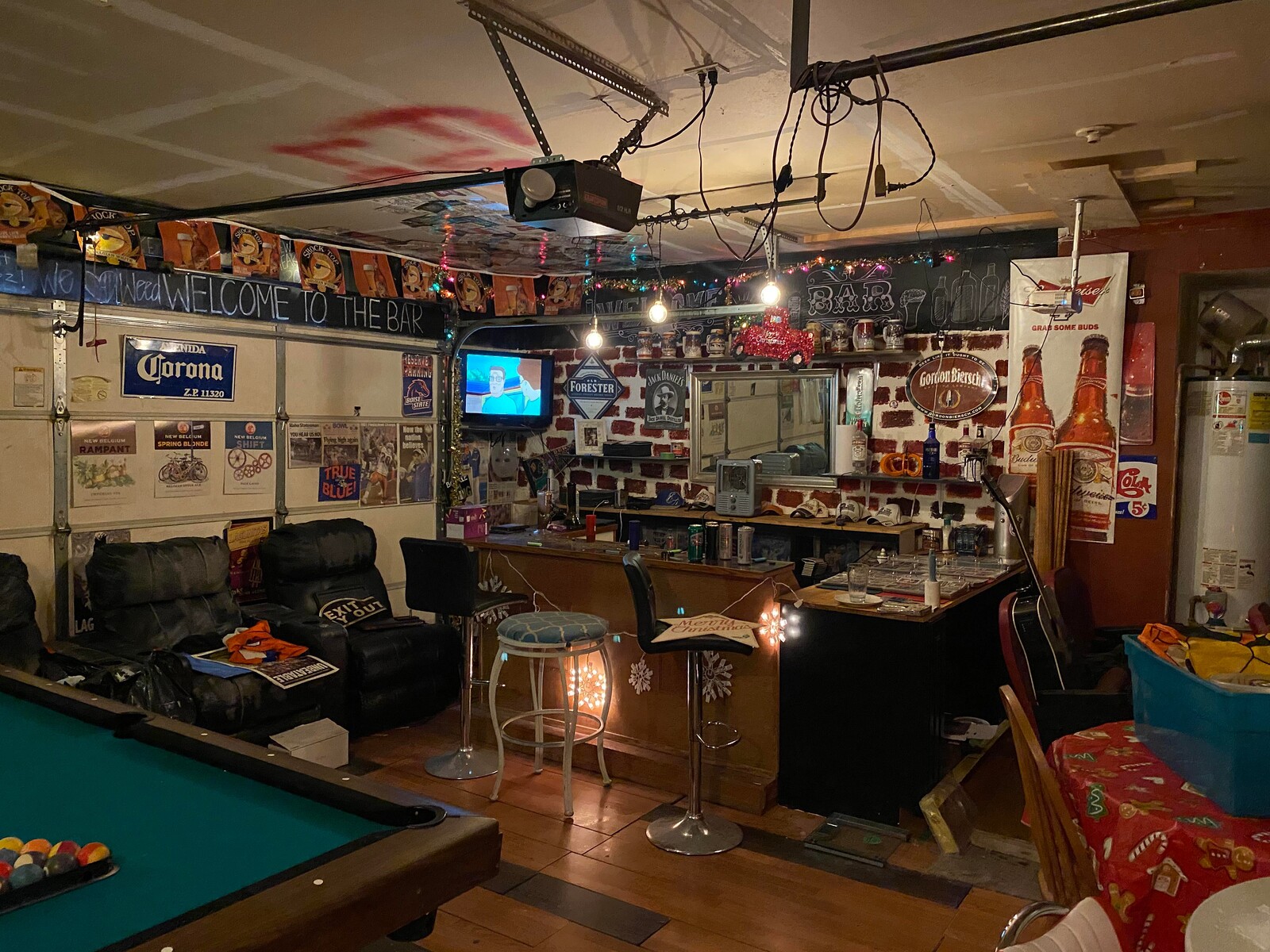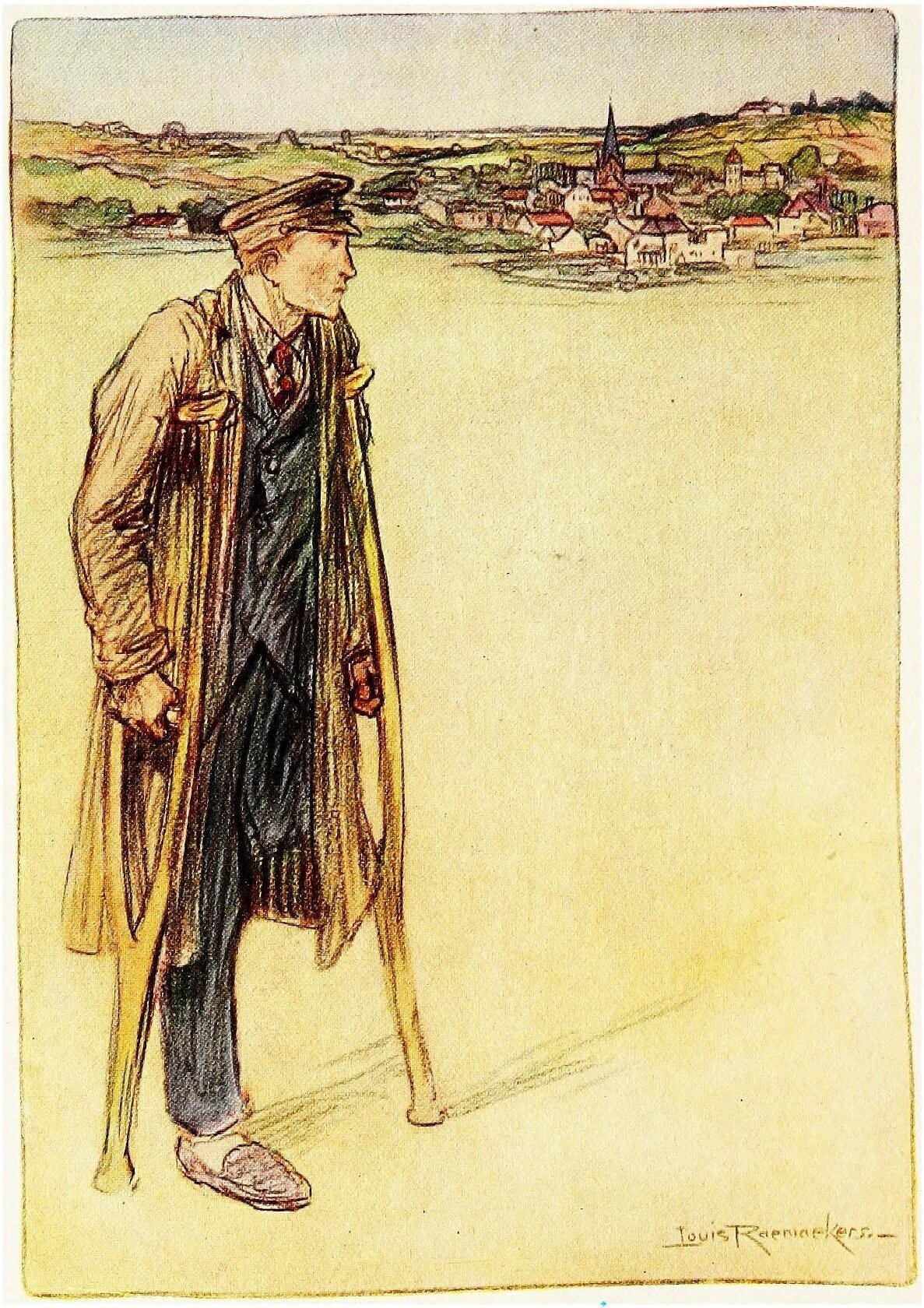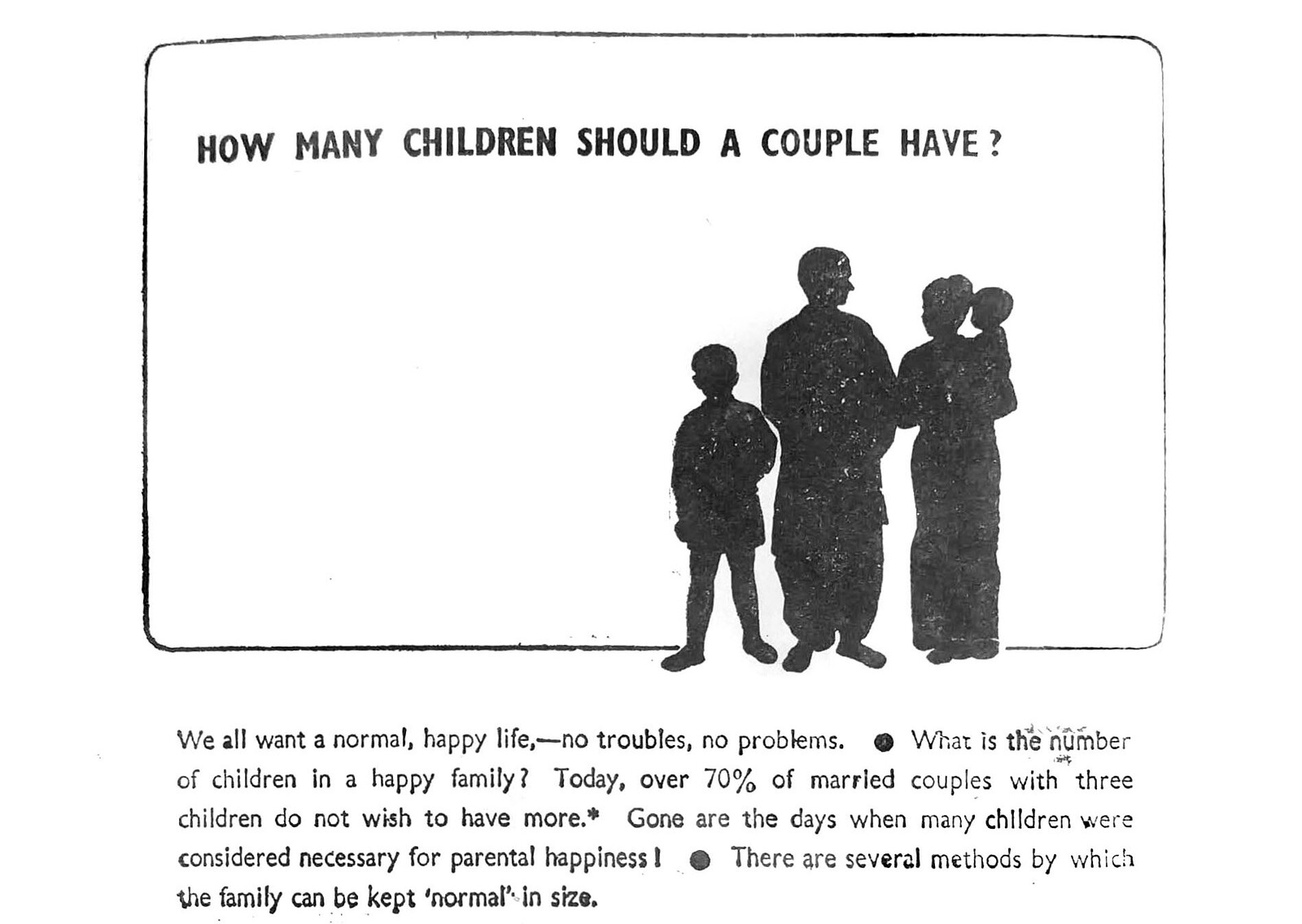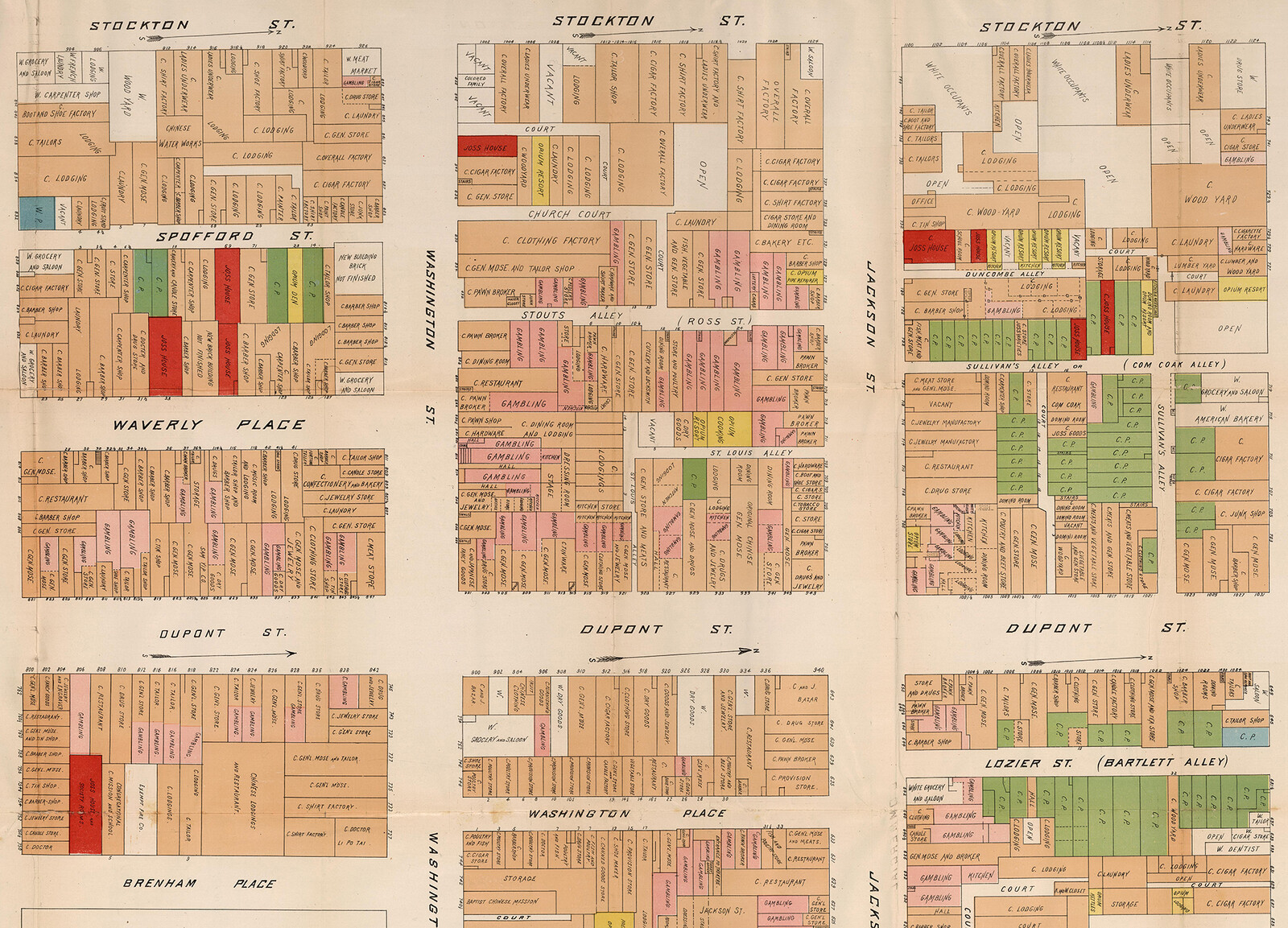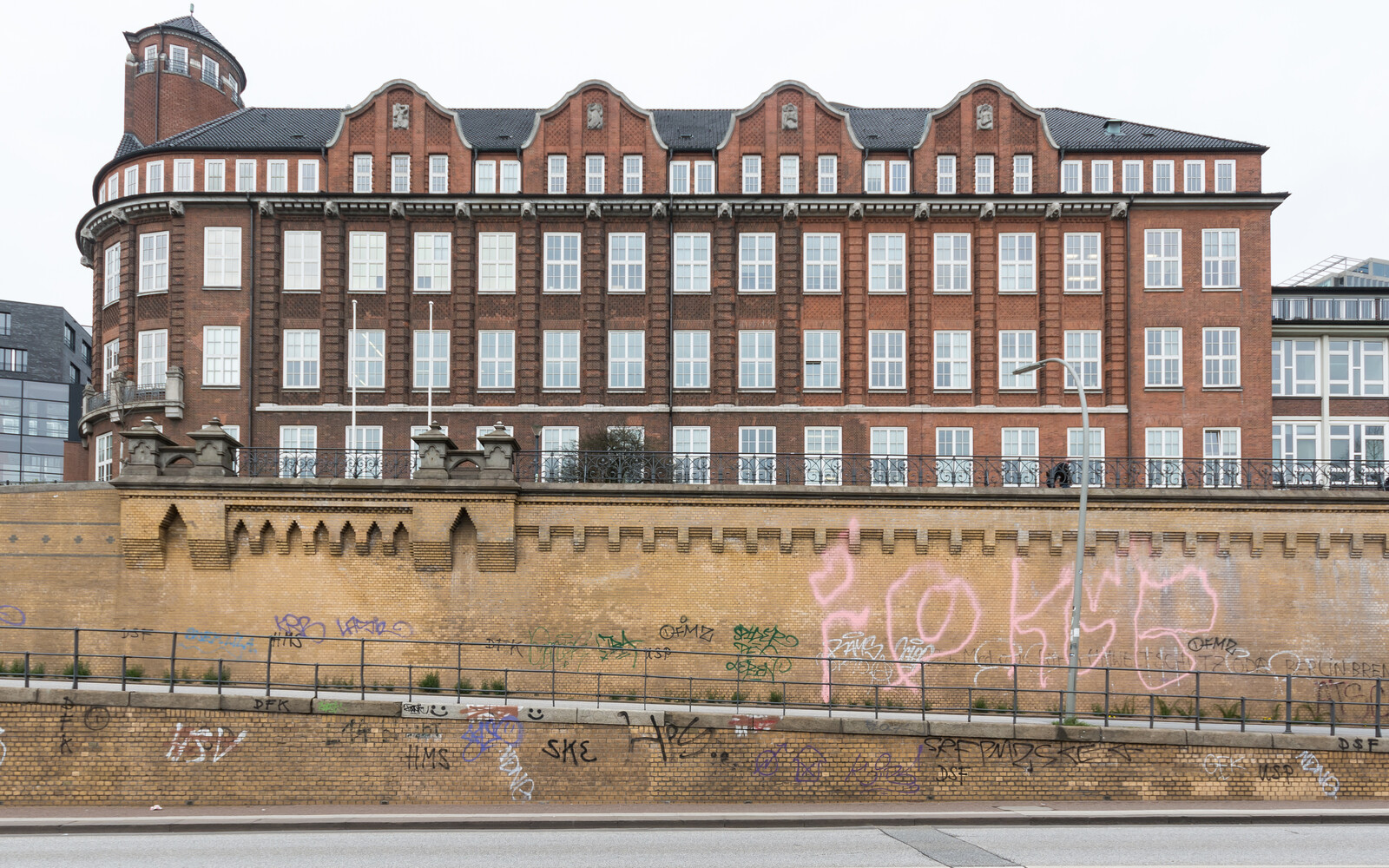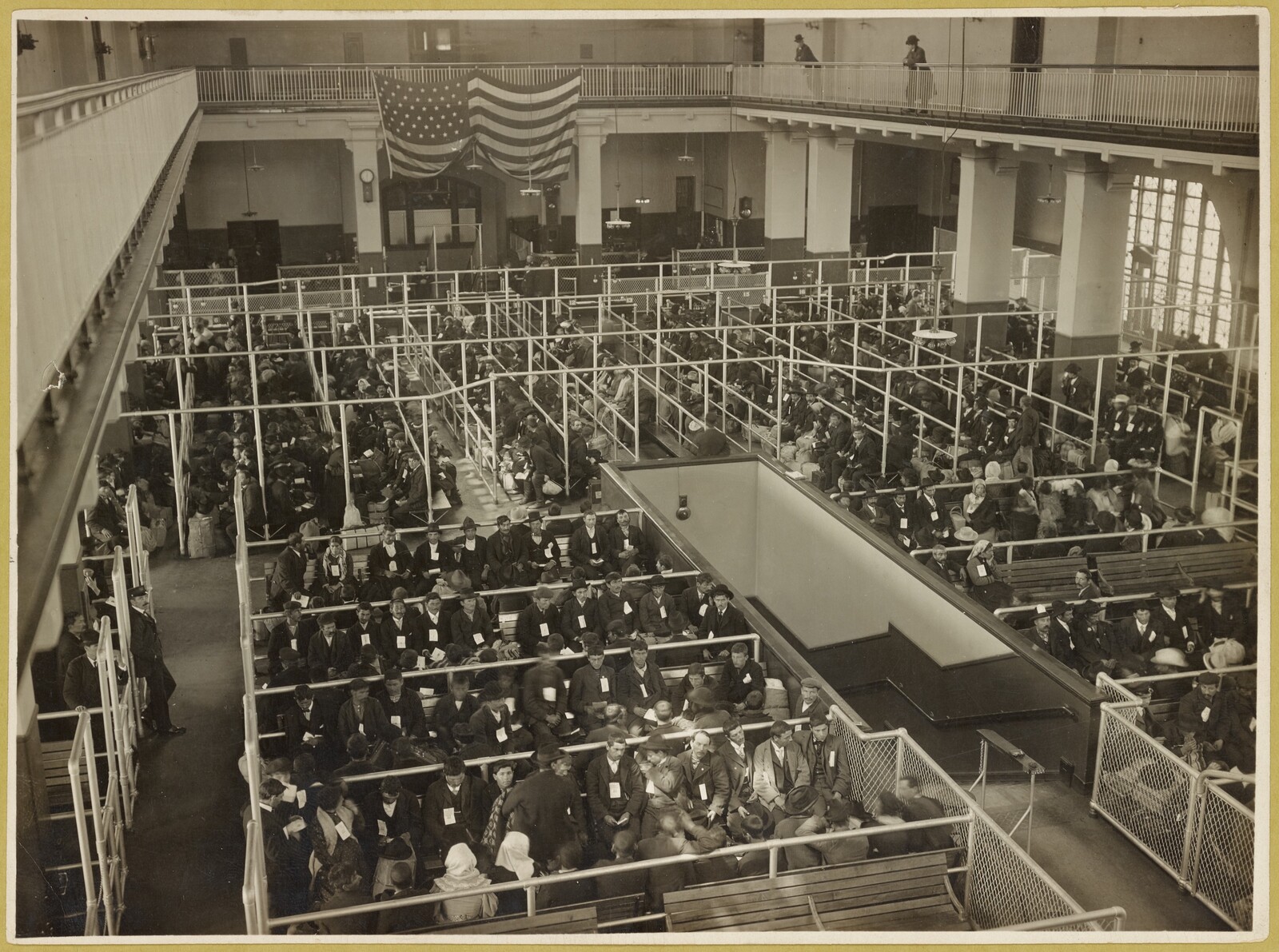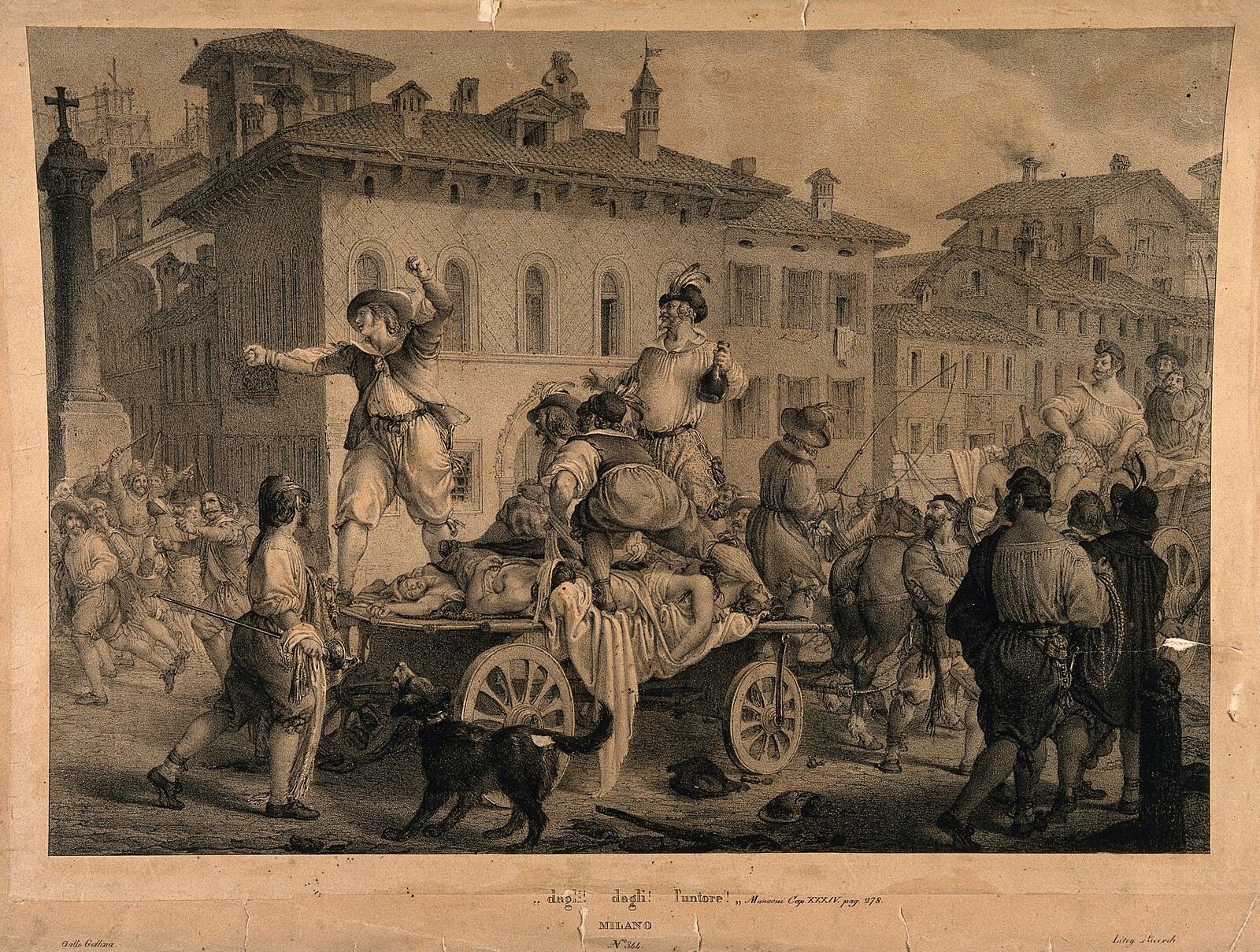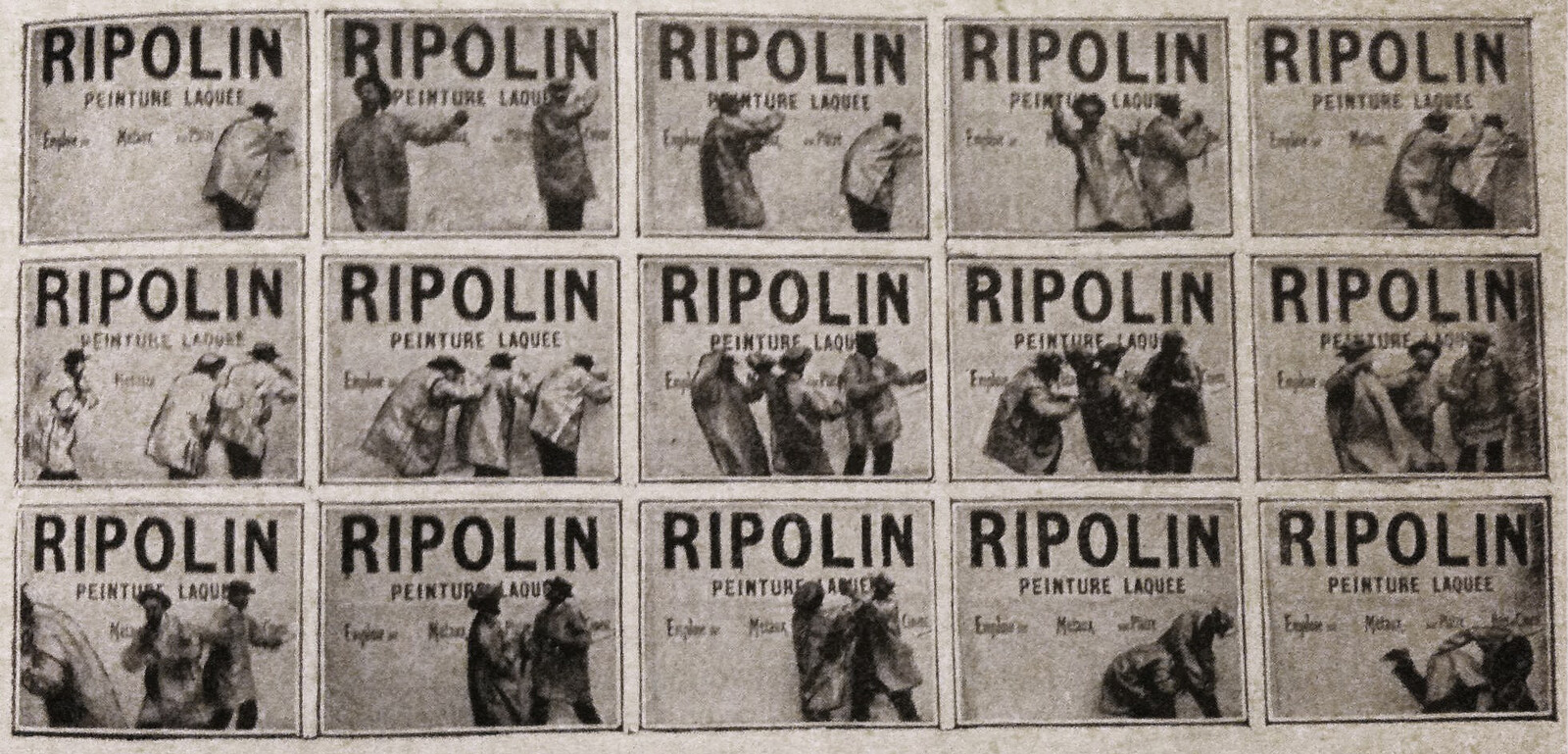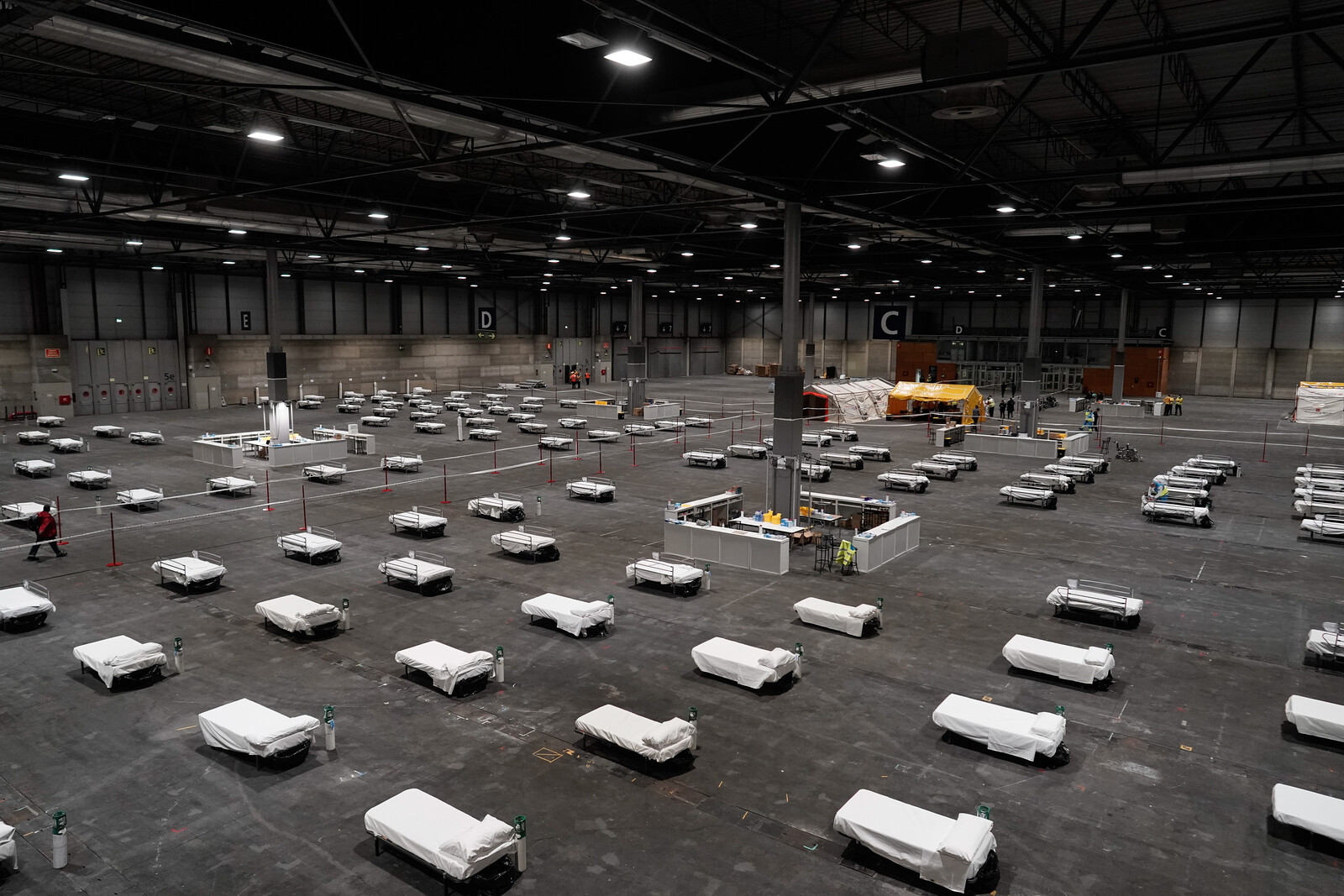I am convinced that the trailer or an improved version of it is, for better or for worse, the low cost dwelling of the future—lacking in solidity, lacking in charm, but inexpensive, convenient and mobile.
—J. B. Jackson1
In the spring of 2011, on one of my many trips to Texas, I visited a trailer park twenty minutes outside Houston’s perimeter highway. I was in my second year of traveling the country to track down the quasi-legal resale of 120,000 emergency housing units that were initially deployed to the gulf coast after Hurricanes Katrina and Rita in 2005. These 150-squarefoot travel trailers were bought by the Federal Emergency Management Agency (FEMA) and later reclaimed after their interior atmospheres were found to bear elevated levels of the irritant, allergen, neurotoxin, and human carcinogen known as formaldehyde. After the federal government washed their hands of these toxic assets via massive auctions beginning in 2010, they wound their way through gray markets with resellers making a few hundred to a few thousand dollars with each exchange. Before setting out on the trip I had mined a one hundred and fifty thousand line spreadsheet for resellers along my planned route. From this list, acquired by way of a Freedom of Information Act request, I came to know that this trailer park had acquired just under 100 FEMA trailers, a quarter of which were designated as scrap. This represented mid-to small-scale reselling, yet still cost over $215,000.2
When I arrived, there was some road work underway on the nearby highway and the air was inked with the smell of asphalt. Most of the trailers of the small, perhaps five-acre trailer park bore deep grime. Dirt mixed with green mildew edged up the sides of their trailers. The park consisted of two lots. One hosted the office, a remodeled modular home fitted with a generous deck out front, and trailers to rent on site. The other lot was dedicated to reselling used mobile homes and trailers. After having heard hundreds of accounts of the warped life-worlds of resold trailer inhabitants, my goal for this trip was to understand how the toxic trailer market understood itself.
As I walked in, a white woman in her late thirties with tight blond curls and carefully painted on eyebrows asked from across the room, “can I help you?” I got my voice together and did my spiel. She looked concerned, at first, then pointed me to the faux wood paneled back office of the owners, Tina and Darryl.
Behind a large desk Tina sat with the posture of a mom—strong but not wasting energy on elegance—filling out contracts, barking out orders to the front office and a roving handyman. Even while she talked to me, she was listening to the conversations in the front room and from time to time, would intervene with no-nonsense assertiveness.
Darryl came in as we were talking through the consent form. They both perked up at my mention of formaldehyde in the form. Darryl dove straight in, “We have always had to deal with formaldehyde issues in the mobile home business. This is nothing new. I always have people sign a formaldehyde release before they buy or move in.” Darryl was crouching next to the desk. He kneeled, suspended in pensive thought before continuing, “Everybody knows that they have formaldehyde in ‘em. They don’t just spray it in there. They put it in as a preservative.”
“It isn’t the formaldehyde that made them sick,” Tina chimes in, “When we drove into Louisiana [after Katrina], we just got stuffed up. It was like a wall of mold and allergens when we drove in. I would be sick too if I lived there. The trailer was protection from that, if anything. They got sick from their environment… not their home.” While formaldehyde is always an issue, always warranting a legal release, they assert that formaldehyde is never a cause of illness. The paradox hung heavily in the air, one that I encountered time and time again when speaking with resellers or park owners.
After several heated minutes of back and forth that wasn’t moving anywhere—fairly standard for my conversations with resellers—I looked for a way out. I asked if residues of their previous use in catastrophe negatively affected their current value. “Having had those people in Louisiana in there before doesn’t matter now.3 I’ve had mobile homes that people have died in, ones where some guy blew his brains out. That is just part of the business,” Darryl answered frankly, running his hand down his cheek to his chin slow enough that the rasp of each follicle of stubble as it passed under his hands is almost audibly distinct. “Once he bought one [a mobile home] from a repo auction that ended up having a body in it,” Tina goaded. Darryl blushed and turned his eyes toward the carpet, his gaze hovering over a plastic toy stethoscope that had tripped me up earlier as I entered the room.
Tina kept the conversation going, distracting from Daryl’s palpable discomfort. “There were some that had voodoo in them. Those Louisiana people had smeared ashes over the door to protect them from evils.” Looking back up, Daryl interjected, “there were bamboo crosses and all that. No one would bid on them.” One of their sons, in his red and white little league uniform, slinked into the office and climbed into his mother’s lap without saying a word. His mouth hung open slightly as he silently stared across the desk at me, unflinching to my playful faces. Daryl looked at his son, then up at the clock, and with a jolt, hopped up from the crouch he had held for nearly an hour. “Okay we need to head out to his game.”
As we walked out together, I asked him how he got started in the trailer business. With a prideful smirk and a mysterious “let me show you something,” he led me to the front office and a small collection of black and white photographs from the 1950s featuring a high-end mobile home. “My grandmother was “Mrs. mobile home” in Florida in 1952,” he proudly related, gesturing to a yellowing newspaper clipping. “My grandparents designed the first mobile home in Florida, ‘The Futuro.’ It was all custom. Here ya got: them, cousins, and the investors. Mobile homes are in my blood.” Flush with vigor and pride, he recounted the particulars of each shot, the model’s features, and every one of his depicted relations. An antithetical disposition to that of his earlier explanations, full of backpedaling, grimaces, and sighs. Times were no doubt hard. The FEMA trailers sold well but they were ensnared in a lawsuit with a former tenant over maintenance issues. He was selling and renting bare-bone homes to desperate folks barely staying afloat, not those playing out their dreams of mobility and luxury. After a brief wistful pause, he rushed out, playfully pushing his son out the door.
I stood in their front office, staring at the collection of images. Beaming men proudly standing by the first Futuro off the line. Airy shots of the mobile home’s interior: ample seating; some fixtures built in for mobile efficiency, convenience, and sturdiness; freely moveable stools, chairs, and end tables lent the feeling of a conventional home. An illustration of the Futuro hovering in a white abstract landscape, replete with design flourishes similar to the more expensive automobiles of the day. A series of gill-like windows encircle the home lending it resemblance to spacecraft. And finally, the centerpiece of the constellation: the Futuro in situ on a secluded beach, palm fronds leaning into the frame from the right.
As I stood in the reception area, regarding what was nothing less than a shrine to the Futuro, I got lost in the expanse between the sixty-year-old dreamworld of mass-produced comfort and escape and the seemingly inescapable hardscrabble realities of the current mobile home business surrounding me. I thought about the long histories of mobile dwellings in North America and how European prefabricated homes entangle with resource extraction and settlement. How the rise of petrochemistry enabled the creation of the mid-century manufactured home, made primarily from engineered woods held together by formaldehyde. How Walter Benjamin concisely summarized the connection between the material constituents of the built environment and dreamworlds: “Construction plays the role of the subconscious.”4 I wondered about how to even begin unpacking the various tributaries that fed into these starkly contrasting realities and how to imagine healthy affordable housing beyond them.
The receptionist punctured my reverie. “Ya know, those Louisiana people bought Cadillacs with their FEMA money,” she called out from across the room, with a hint of venom. The phantasmagoria of the Futuro sputtered to a halt. I returned from the nostalgic futurism of the photos to where I stood on a shag carpet that resembled a dog’s coat after a day at the beach. To the mildewing shelters of last resort that they rented out to the down on their luck or the newly evicted. To a manufactured interior space where nothing is custom-built like the Futuro. To the news story about Daryl buying a mobile home with a dead body in it, which hung discretely in a back corner. To the grounded dream of the mobile home.
“Cadillacs got formaldehyde in ‘em too, why couldn’t that be what’s making ‘em sick?” she continued, pursing her lips and raising her painted on eyebrows when I turned to look at her. “Well,” I thought out loud, “You don’t live in your car—I mean, you don’t spend as much time in it… It’s easier to ventilate… um, there is probably less formaldehyde in it because there are no engineered woods in ‘em… and how many people really bought new Cadys with their FEMA money?” She waggled her head disapprovingly at my answer and turned to her paperwork. A gust of asphalt-singed air blew into the room as a Latina woman pushed open the front door, a baby slumbering on her breast. “Do you have anything I can move into today?” She asked in a thick accent as I left, pushed out by the receptionist’s glare.
During a six-month stay in a travel trailer in rural Oklahoma, a three-year-old developed small red dots on the backs of her ears, began bruising more easily, and walked through the world more clumsily, constantly toppling over. An older Indiana woman descended into a fog of “fuzzy thinking” and felt that her body was deteriorating at a slightly accelerated rate. A middle-aged man in Ohio sustained a “sick stuffy nose” and “throat problems” for a year and a half. Eye and respiratory-tract irritation, headaches, insomnia, and fatigue slowly crept into the body of a single father in rural Florida. His dreams, which became increasingly menacing over a matter of months, abated in intensity only when he slept next door at his grandparents’ house. The stool of a nurse in Texas gradually loosened in consistency. A grandfather on a reservation in what is currently known as Washington State almost entirely ceased eating as his sense of taste began to dull. His wife, experiencing the same sensorial skewing, doused her food with large quantities of salt and noted the “weird air” in their home. These people, and hundreds of others that I’ve spoken with over the years, all began developing subtle and ongoing alterations to their physical constitution after spending time in a manufactured home that would eventually be suspected of sustaining elevated levels of airborne formaldehyde.
Homesick Beginnings
We would especially call the attention of emigrants and colonies locating in the West, and also of emigrant and land associations to the advantages of these houses for the use of settlers.
—The Clemens Ready Made Sectional Houses (sales pamphlet), 1862.
The history needed to better understand the social projects that give form to this quintessentially rural and suburban habitation extends well beyond the techno-utopianism of the 1950s to the fledgling days of North American colonization. Settler colonialism can be thought of as a process of manufacturing home on top of and in place of the homes of a land’s original human inhabitants. Making the colonist’s home mobile and exportable is foundational to the settler-colonial project. Bringing a diminutive architecture of home along on voyages of conquest, settlement, and extraction was crucial to European colonial expansion. In other words, the mobile home is a key technology of settler expansion and colonialism.
Manufactured housing dates back to 1587, when the first prefabricated dwelling in North America failed to be built. The wooden structure had been shipped from England to house one hundred gold miners for the winter in what is now known as Baffin Island, Canada. Two of its walls never arrived. Other parts were lost to the icy sea. The crew ended up sailing back to England as the brutal Arctic winter closed in.5 British housing technology had not yet caught up with its colonial and extractive ambitions.
Two centuries later, industrial manufacturing techniques of prefabrication and modular paneling began refining English architectures of occupation as the empire prepared to accelerate its colonial emigration efforts. In the 1790s, the British dispatched prefabricated houses, shops, a church, and hospitals to Freetown, purchased by the Sierra Leone Company. Simultaneously, flatpack storehouses and cottages sailed toward Sydney, where they met “the first real building in Australia … brought from England by Captain Arthur Phillip in 1788.”6 These pre-made buildings were, in the eyes of the settlers, physical manifestations of white supremacy, disqualifying Indigenous architecture as inferior and illegitimate, despite premade dwellings often being ill-adapted to the Australian climate. As thousands of Brits were paid to emigrate to South Africa in the 1820s to curtail severe unemployment at home, the Colonial Office shipped demountable housing along with them.
Difficulties with transportation and assembly led to further streamlining and the development in 1833 of the Manning Portable Colonial Cottage, which required no nails to erect and had standardized components that were small enough that “a boy could carry [them] for several miles.”7 These cottages were purchased en masse by Australian settlers and, with their popularity, established a market for settler prefabricated dwellings. Their designs were quickly pirated by an architect in Baltimore for use by argonauts headed to the California gold rush in 1849 and, later, by settlers of the North American prairies who had only a few trees for lumber, save for small groves of cottonwoods near streams.8 Already by the mid-nineteenth century, the center of the prefabricated home market began to shift from Britain to the United States. With fresh buyers spread out from the prairies to Hawaii, the market for British prefabs dwindled.9 Like contemporary mobile homes that never move from the ground of their initial placement 95–97% of the time, these US-made structures were not designed for seasonal or occupational migration but for singular, rapid settlement.10
As early manufactured houses proliferated across the globe, like thousands of imperial flags staked into the ground, they were not only foundational to the stealing of Indigenous land but also to the “instant” transition of rural settlements into urban ones. For example, a prefab home was the first settler structure in what is now San Francisco, and these structures multiplied to become the scaffolding upon which the city was built. Today, more than half of mobile homes are located in rural areas, where nearly one in five homes is manufactured, yet their influence on urban density and form lingers in the history of colonial cities across the globe.
With prefabrication, European colonists were able to instantly reproduce the aesthetics of home; seize territory through European legal doctrines like terra nullius; advance ideas of universal white superiority; protect and advance regimes of private property; actively remain ignorant of local materials, local ecologies, and place-based practices of homebuilding; and rapidly scale settlement. Mobile homes thus enabled the mobility of imperialism.
Today, the mobile home’s relationship to colonialism is not solely that of a vessel for fast, affordable settlement. Native Nations are now flooded with manufactured housing. Indeed, between 2007 and 2009 1,300 FEMA mobile homes were given to eighty-eight tribes, and I’ve been contacted by members of nearly a dozen tribes about formaldehyde testing.11 The disproportionate use of mobile housing on Native lands is an indicator of the limits to tribal sovereignty under the colonial reservation system. This system holds most Native land in federal trust, a separation of land and home ownership that yields especially high levels of mobile home use. In 2016, American Indians and Native Alaskans living on reservation land were twenty-one times more likely to finance a mobile home loan versus a conventional home loan than the average American.12
Warren Buffett’s Berkshire Hathaway owns Clayton Homes, which operates a network of over 1,600 dealerships and sells almost half of all manufactured housing in the United States. The Clayton Homes subsidiary Vanderbilt Mortgage provides the majority of Indigenous, Black, and Latinx mobile home lending, while only servicing 31% of the white mobile home market. Its interest rates are 0.73% higher for minorities than for white customers, regularly resulting in default and repossession of mobile homes on reservations or the seizing of land that had been black-owned since Reconstruction and “put up” to secure a predatory loan.13
The majority of mobile home purchases are financed via personal property loans like cars (and tend to similarly decrease in value, as opposed to the wealth building of conventional homes). While quicker to approve, these loans bear higher interest rates than mortgages and fewer consumer protections. Together, these attributes make falling behind on payments easy and repossession swift. Defaulting owners sometimes return home not to foreclosure notices but to the negative space of their home towed away to an impoundment lot. Factory-building as opposed to site-building homes also allows not only for the full confiscation of the home but also the concentration of profits in a small number of firms which more efficiently systematizes the racialization of predatory lending.
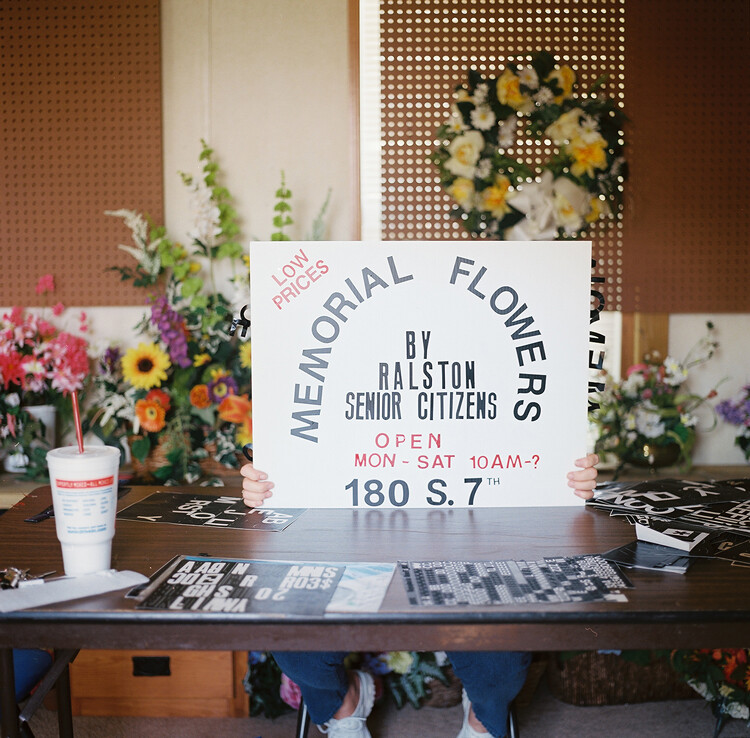

Diane volunteers several days a week in a FEMA trailer. As part of the Ralston Senior Citizens group, she recycles old floral arrangements—collecting them from graves and re-organizing them into new arrangements. Photo: Akasha Rabut.
Toxic Loans and Toxic Homes
The domicile that became known as the mobile home, one that was factory assembled and towable behind a truck rather than assembled onsite like a prefab home, first became a coherent phenomenon in the 1930s during in the bleakest days of the Great Depression.14 As the consequences of loose credit and rampant stock speculation stalled housing construction and drove up unemployment, more and more people were forced into living permanently in trailers.15 The US’s ever-increasing network of roadways and devotion to the automobile also beckoned new valuations of mobility that made these emergent forms of roving domesticity possible.
War intensified what finance had begun. During World War II, military personnel and other defense industry workers were housed in over 120,000 mobile homes distributed across thousands of trailer villages. After the war, returned servicemen quickly oversaturated the conventional housing market and veterans starting new families streamed into mobile homes. The wide variety of Americans that inhabited trailers in the war effort helped to partially transform mobile homes in the national imagination from the dwellings of the itinerant fringe into a legitimate residential alternative.
As homebuilders scrambled to keep up with housing demand after the war, a host of new plastic and plastic-infused building materials were reaching maturity—expedited by the war effort. The chemical reactions that formed the first plastic—phenol and formaldehyde in bakelite—were being adapted into the adhesives that held together plywood. These standardized sheets of wood-plastic mixtures resisted decay, cut and deskilled installation labor, and reduced the amount of nails used in average home construction by half. Their influence is most concentrated in the mobile home but extends to all housing types. As post-war demand fueled a housing explosion, the square footage of structural plywood incorporated into the average site-built home more than quintupled from 1950 (1,707) to 1992 (9,668), and usage of particle board, another engineered wood, increased 3,000% between 1954 and 1992.16
Due to their expense, phenol-formaldehyde resins were soon relegated to only exterior-grade plywoods, while urea-formaldehyde resins took hold of interior spaces through interior-grade plywood, particle board, chipboard, luan, and a host of other engineered woods. While cheaper, the chemical bonds of urea-formaldehyde plywood are more unstable than phenol resins, continuously and quietly sublimating formaldehyde into enclosed indoor atmospheres. While formaldehyde levels elevated are found across all homes that utilized engineered woods, the corrosive atmospheres in mobile homes are so pervasive that they harbor three to four times the chemical load of conventional homes. As these toxic vapors suffuse into the bodies of inhabitants, they have given rise to a novel constellation of chronic, enervating symptoms, dubbed “mobile home syndrome.”17
Formaldehyde-based resins that held together the post-war home are material co-constituents of the fiscal instrument of the American mortgage. In the postwar years, in order to ensure that the bottom would not drop out of the postwar construction boom, the Federal Housing Administration (FHA) significantly liberalized their mortgage terms, first in 1948 by increasing the maximum payback term from twenty to thirty years (thus reducing monthly payments), and then in 1956, by decreasing the minimum down payment required from 20% to 5% for new construction and 10% for existing homes. What could be considered the birth of the contemporary mortgage industry began a year later when the Mortgage Guarantee Insurance Corporation allowed lenders to make even riskier loans than those of the FHA.18 Down payments decreased by around $15,000 contemporary (2021) dollars in the decade following this change, even as the average home price soared by over fifty percent.19
Polymerized wood products subsidized the post-war spike in home construction and ownership, of which the latter grew by nearly 70% between 1940 and 1980.20 This new access to homeownership, facilitated by both cheaper housing and liberalized financing options, ratcheted up the mortgage debt burden relative to total household income shouldered by homeowners. Mortgage debt was twenty percent of household income at mid-century, but over seventy percent of household income by the turn of the millennium.21 Formaldehyde and the engineered woods it held together played a vital role in radically expanding the depth of American indebtedness. This debt was cast as a social good through the valuation of homeownership which enhanced the predictability of housing, financial, and labor markets.22
In the late 1960s and early 1970s, when inflation was steadily mounting and the price of housing inched out of reach for almost half of American families, mobile homes again became an increasingly popular fallback means of accessing home ownership. Of all single-family homes sold in 1969, over forty percent were mobile homes. (Morris and Woods 1971: 3) And in a 1970 Housing and Urban Development (HUD) report, the Nixon administration praised the mobile home industry for mitigating the effects of the housing crisis on those with low and moderate incomes. Notably, in this same report, HUD first began counting mobile homes as residences, increasing the likelihood that their statistics would support the administration’s home construction goals.
Tantalized by its unique properties, architects and chemists alike had seized upon the possibility of “all plastic homes” in the post-war period. From rapidly assembled humanitarian huts to UFO-like modernist mansions, plastic home prototypes proliferated in the 1950s, 1960s, and early 1970s until the US Federal Trade Commission sued twenty-six plastics manufacturers, a standards organization, and a plastics professional society for underrepresenting the flammability of cellular and foam plastics in 1973.23 This legal and safety blow, combined with soaring oil prices of the 1970s oil crisis, stymied the advancement of the highly plasticized home—save for the low-cost manufactured housing market.
With plywood walls, fiberboard doors, laminate in-built furniture, and particle board subfloor, no housing utilizes as much polymerized wood as mobile homes. The mobile home represented both the ultimate industrialization of home construction and, through its affordability, democratization of home ownership.24 While perhaps on the higher end of the market spectrum, the Futuro epitomized the mid-century dreamworlds—of technological optimism, and liberation through consumption—that brought the mobile home market from obscurity to a conspicuous figure of the rural and suburban landscape. Mobile homes are the only sustained and scaled vestige of the petrochemical fantasy of the all-plastic home. The Futuro and its less charismatic offspring continue to realize this dream.
In the last quarter of the twentieth century, mobile homes settled into a social and financial position not far from where they are today: a deep double bind. The financial savings of low-cost manufactured housing, which gives those with modest incomes access to the housing market, have been offset by the social costs of being relegated to marginal land and ascribed overt and covert stigma, in addition to their health costs. From the very same low-cost materials that contribute to their affordability, a pernicious cloud of formaldehyde emanates and accumulates within the home. The head-spinning arithmetic of financial advantage and social and biological sacrifice is often made simple for those who can afford no other option.
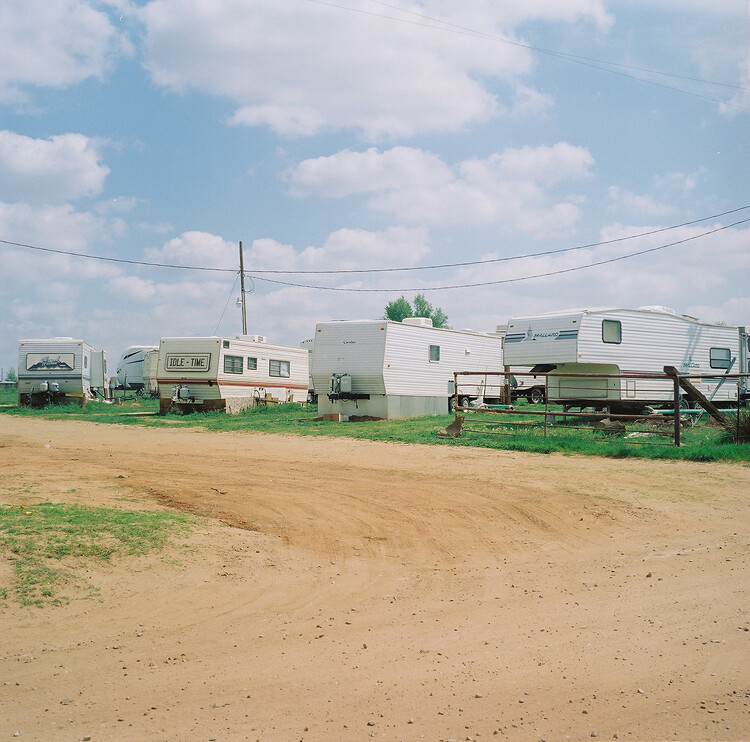

A lone FEMA trailer in Wheeler, TX, the site of a fracking oil boom. FEMA trailers are wildly used in oil fields from Louisiana to North Dakota. Photo: Akasha Rabut.
Beyond Predatory Inclusion?
These vaporous exposures braid into the long history of manufactured housing-driven homesickness that dates back to their first days on Turtle Island. They were vital architectures of conquest and then, following the petrochemical revolution of building materials, toxic and depreciating residences for Indigenous peoples whose land was held in trust by the federal government. Mobile home dealers would sometimes illegally and incorrectly tell Native customers that their lender, who charged Indigenous people higher rates than whites, was the only company that would finance mobile homes on the reservation.25 Black and Latinx people similarly paid higher prices for the financing of the same, often toxic, product.
The postwar expansion in homeownership was racialized in ways that resonate with the financial underpinnings of the mobile home market. Less than 2% of FHA-insured mortgages were purchased by nonwhites in the decade following the 1949 National Housing Act.26 As historian Keeanga-Yamahtta Taylor has detailed, banks, white property owners, and real estate agents greatly profited off a mortgage financing system based on financial risk assessments that cut along racial lines. This structured market drove up the value of homes in white neighborhoods and aimed extortionary interest rates at communities of color that were deemed riskier. The FHA insured these high interest loans for lenders, incentivizing them to offer loans that were designed to default as these ventures were risk-free for the financier and bore high origination fees. Default, expedited by higher monthly payments for lower quality housing than their white counterparts, would result in loss of deposit, improvement investments, and accumulated equity for the “high-risk” Black homeowner. Taylor calls this phenomenon “predatory inclusion.”
The demarcation between true affordability and predatory inclusion in the mobile home market appears to be as light and shifting as a tidal high-water line. As the largest form of unsubsidized affordable housing in the US—costing upwards of 50% less per square foot than conventional homes—these factory-built homes no doubt keep roofs over the heads of tens of millions of people that might otherwise be even more housing insecure. But the insecurities of these homes from social stigma, more costly loans with fewer protections, steep devaluation, threat of mobile home park eviction,27 disproportionate lack of water service reliability,28 elevated mold levels, greater proximity to outdoor environmental exposures,29 and indoor chemical exposures totalize into a daunting set of obstacles for their low-income residents. In this view, mobile homes swap the massive and singular weight of financial burden with a constellation of smaller hidden weights as residents attempt to tread water at the very least.
Our climatically destabilizing planet will only compound these problems. As mobile homes have limited walling integrity (limited insulation and poor seals), they are difficult to heat and cool, saddling residents with exorbitant energy costs. As the most energy-cost- encumbered housing type, mobile home residents are twice as likely to bear a high energy burden as single family detached home residents.30 Indeed, a just energy transition is farther away for mobile home residents than any other housing type in the US, as every dollar invested into increasing the energy efficiency of a mobile home only saves a net of three cents, a net return on investment twenty-four times lower than single family homes.31
The predatory inclusion of manufactured housing splinters along more than financial and racial lines, as the vast majority of manufactured home owners are lower-class white people, stigmatized as “trailer trash” due to their often financial and often geographic proximity to minorities. The profits that can be extracted from housing vulnerability are not exclusive to people of color, yet they are heightened for people of color and Indigenous people through the instruments of colonial land tenure and loan risk assessment. But these are not the only ways that this form of affordable housing concentrates its drawbacks along racial and ethnic lines. Discriminatory code enforcement targets Latinx farmworkers, for instance, demanding them to make repairs they cannot afford.32 Latinx neighborhoods in the Southwest are also on average four degrees hotter than white neighborhoods.33 This racialized patterning of home placement amplifies the thermal vulnerability of Latinx mobile home life in the sun belt.
From people with disabilities to seniors on fixed incomes and immigrants, the multiple forms of housing distress inherent to mobile homes result in lucrative investments that increase in value during recessions. For this reason, private equity firms ranging from Blackstone ($457 billion in assets) and Apollo Global ($270 billion) to the sovereign wealth fund of the Government of Singapore ($360 billion) and the Pennsylvania Public School Employees Retirement System ($56 billion) converged on purchasing manufactured housing parks in the mid to late 2010s.34 Rents and fees in these parks are on the rise, forcing some people on fixed incomes to pick which medications to skip doses of and stretch out the time between refills.
The ways that shelter can become exposure are highlighted by how seniors that retire in the southwest are both three times more likely than those under retirement age to live in manufactured housing and three-and-a-quarter times more likely to die from heat inside their homes than those who live in other housing types. In sprawling and sweltering Maricopa County, 28% of indoor heat-associated deaths occur in manufactured homes despite only amounting to 5% of the housing stock.35 J. B. Jackson’s assertion that mobile homes would be the “low cost dwelling of the future,” one that arose from roving the rural American landscape, appears to have both suffered blood damage and heat stroke in a destabilized climate where mobile homes are increasingly cited in the hottest census tracts and on floodplains.36
There is much excellent policy work happening right now to mitigate some of these risks, from regulating their chattel loans and increasing eviction protections to pushing the federal Low-Income Home Energy Assistance Program to include mobile homes in their eligibility criteria. But calls to think and build beyond this form of affordable housing are seemingly nonexistent. And with increasing risks to the marginal lands that these non-dense forms of housing are placed on—now including disproportionate forest fire risk— attempts to cultivate reconciliation with Indigenous peoples without the return of land and sovereignty indicate clear limitations to these reforms.37
The manifest shortcomings of European traditions of homemaking, which were baked into the establishment of the colonial project and the use of mobile housing for settlers, are present today in the intimate atmospheres of some twenty-two million people who inhabit mobile homes in the United States. As the toxicity of manufactured housing is woven into their very structure (formaldehyde from hydrocarbons), their conceptual moorings (mold and energy poverty from environmentally inappropriate design), and the theft of Indigenous lands (disproportionately forcing Indigenous people into these structures), an equitable vision of affordable housing cannot stop at achieving racial parity for mobile home loans or elaborating private property protections. Land restitution and Indigenous-led architecture and planning are key avenues for “meeting lands where they are” and developing or reinvigorating place-based interventions into widespread housing insecurity that refuse to flatten human-land relations in the way that the mobile home was designed to do.38 Massive increases in affordable multi-family housing with access to mass transportation would have crosscutting benefits, from those whose shelter is exposure to those without a home at all. Until these movements are embraced, mobile home inhabitants will remain suspended between countervailing currents of structural marginalization, toxic exposures, and the predatory benefits of low-cost shelter.
J. B. Jackson, Landscape in Sight: Looking at America (New Haven; London: Yale University Press, 2000), 222.
Numbers here are kept approximate to protect reseller identities from discovery by using these same public records.
In Texas, many of the white people that I talked to used the term “Louisiana people” to mean Black people.
Walter Benjamin, The Arcades Project, ed. Rolf Tiedemann, trans. Howard Eiland and Kevin McLaughlin (Cambridge: Belknap Press of Harvard University Press, 2002), 16).
Charles Peterson, “Early American Prefabrication,” Gazette Des Beaux-Arts 6, no. XXXIII (1948): 37–46.
Gilbert Herbert, Pioneers of Prefabrication: The British Contribution in the Nineteenth Century (Baltimore: Johns Hopkins University Press, 1978), emphasis mine.
Ibid., 9.
While the US primarily fulfilled the prefab house desires, with thousands of shipped houses, houses were also shipped from China, Tasmania, Hong Kong, New Zealand, and the UK.
Herbert, Pioneers of Prefabrication, 27.
John Fraser Hart, Michelle J. Rhodes, and John T. Morgan, The Unknown World of the Mobile Home (Baltimore: Johns Hopkins University Press, 2002). Robert Kronenburg, Houses in Motion (London: Academy Editions, 2002), 80.
Kenneth J. Cooper, “As Housing Shortage Worsens, Tribes Forced to Use FEMA Trailers,” Truthout, May 6, 2011, ➝.
Kevin Johnson and Richard M. Todd, “The Market for Manufactured Home Loans to American Indian and Alaska Native Borrowers In Indian Country Remains Highly Concentrated,” Center for Indian Country Development, December 1, 2017, ➝.
Mike Baker and Daniel Wagner, “Minorities Exploited by Warren Buffett’s Mobile-Home Empire,” The Seattle Times, December 26, 2015, ➝. The manufactured housing market experienced a securitization-driven market meltdown in the late 1990s that foreshadowed the bursting of the larger housing bubble around a decade later. The boom in risky chattel loans was made possible by large increases in the securitization of manufactured home loans—from $184 million in 1987 to $15 billion in 1999. When the national housing market bubble popped in 2007/8 hundreds of billions of federal dollars were dedicated to rescuing mortgages from default that did not include chattel mobile home loans. Ann M. Burkhart, “Bringing Manufactured Housing into the Real Estate Finance System,” Pepperdine Law Review 37, no. 2 (2010), 427–458.
Lawrence Saunders, “Roll Your Own Home,” Saturday Evening Post, May 23, 1936.
Hart, Rhodes, and Morgan, The Unknown World of the Mobile Home, 9.
Janet Ore, “Mobile Home Syndrome: Engineered Woods and the Making of a New Domestic Ecology in the Post–World War II Era,” Technology and Culture 52, no. 2 (2011): 260–286, 270, 272.
Ibid.
Richard K. Green and Susan M. Wachter, “The American Mortgage in Historical and International Context,” Journal of Economic Perspectives 19, no. 4 (2005): 93–114, 96–97.
United States and National Commission on Urban Problems, Building the American City: Report of the National Commission on Urban Problems to the Congress and to the President of the United States (Washington, DC: US Government Printing Office, 1969).
The ownership rate among U.S. households rose from 43.6 percent in 1940, the last census year before World War II, to 64 percent by 1980 (Census of Population and Housing, 1940 and 1980).
Lawrence Mishel, Lawrence R. Mishel, Jared Bernstein, and Heather Boushey, The State of Working America, 2002/2003 (Cornell University Press, 2003). Similarly, mortgage debt rose from being 15% of household assets in 1949 to 28% in 1979 and 41% of household assets by 2001.
Mortgages confer status to owners by virtue of having qualified—via credit ratings—for a mortgage/debt relationship with a bank. Constance Perin, Everything In Its Place: Social Order and Land Use in America (Princeton: Princeton University Press, 1977).
Billie Faircloth, Plastics Now: On Architecture’s Relationship to a Continuously Emerging Material (London; New York: Routledge, 2015), 263.
Janet Ore, “Mobile Home Syndrome,” 273–277.
Mike Baker, and Daniel Wagner, “Minorities Exploited by Warren Buffett’s Mobile-Home Empire,” ➝.
Keeanga-Yamahtta Taylor, Race for Profit: How Banks and the Real Estate Industry Undermined Black Homeownership (Chapel Hill: University of North Carolina Press, 2019), 35.
Esther Sullivan, Manufactured Insecurity: Mobile Home Parks and Americans’ Tenuous Right to Place (Oakland, California: University of California Press, 2018).
Gregory Pierce and Silvia Jimenez, “Unreliable Water Access in U.S. Mobile Homes: Evidence From the American Housing Survey,” Housing Policy Debate 25, no. 4 (October 2, 2015): 739–753, ➝.
Esther Sullivan, Carrie Makarewicz, and Andrew Rumbach, “Affordable but Marginalized,” Journal of the American Planning Association 0, no. 0 (August 25, 2021): 1–13, ➝.
Chip Berry, Carolyn Hronis, and Maggie Woodwad, “Who’s Energy Insecure? You Might Be Surprised.” In ACEEE Proceedings, 2018, ➝.
Bruce Tonn, Erin Rose, and Beth Hawkins, “Evaluation of the U.S. Department of Energy’s Weatherization Assistance Program: Impact Results,” Energy Policy 118 (July 1, 2018): 279–290. Thanks to Greg Pierce for pointing out this vital connection.
John Johnson and Sullivan Brennan, “$21-Million Deal to Improve Farm Worker Housing,” Los Angeles Times, May 23, 2000, ➝.
John Dialesandro, Noli Brazil, Stephen Wheeler, and Yaser Abunnasr, “Dimensions of Thermal Inequity: Neighborhood Social Demographics and Urban Heat in the Southwestern U.S.,” International Journal of Environmental Research and Public Health 18, no. 3 (January 2021): 941.
Jim Baker, Liz Voigt, and Linda Jun, “Private Equity Giants Converge on Manufactured Homes,” February 2019, ➝.
Mark Kear, Margaret Wilder, Patricia Solís, David Hondula, and Mark Bernstein, “Self-Isolating from COVID-19 in a Mobile Home? That Could Be Deadly in Arizona,” The Arizona Republic, May 3, 2020, ➝.
Dalbyul Lee and Juchul Jung, “The Growth of Low-Income Population in Floodplains: A Case Study of Austin, TX,” KSCE Journal of Civil Engineering 18, no. 2 (March 1, 2014): 683–693, ➝.
Gregory Pierce, C.J. Gabbe, and Annabelle Rosser, “Households Living in Manufactured Housing Face Outsized Exposure to Heat and Wildfire Hazards: Evidence from California,” Natural Hazards Review 23, no. 3 (August 1, 2022).
See Wanda Dalla Costa, “Contextualized Metrics + Narrating Binaries: Defining Place and Process in Indigenous North America,” Presented at the Association of Collegiate Schools of Architecture (ACSA), Santiago, 2016, ➝; David S. Edmunds, Ryan Shelby, Angela James, Lenora Steele, Michelle Baker, Yael Valerie Perez, and Kim TallBear, “Tribal Housing, Codesign, and Cultural Sovereignty,” Science, Technology, & Human Values 38, no. 6 (November 1, 2013): 801–828, ➝; Erin Marie Konsmo and Karyn Recollet, “Afterword: Meeting the Land(s) Where They Are At.” In Indigenous and Decolonizing Studies in Education: Mapping the Long View, edited by Linda Tuhiwai Smith, Eve Tuck, and K. Wayne Yang, 2019.
Sick Architecture is a collaboration between Beatriz Colomina, e-flux Architecture, CIVA Brussels, and the Princeton University Ph.D. Program in the History and Theory of Architecture, with the support of the Rapid Response David A. Gardner ’69 Magic Grant from the Humanities Council and the Program in Media and Modernity at Princeton University.
An earler version of this essay was published as “Manufacturing Home,” Journal for the Anthropology of North America 22, no. 2 (2019): 121–124.
